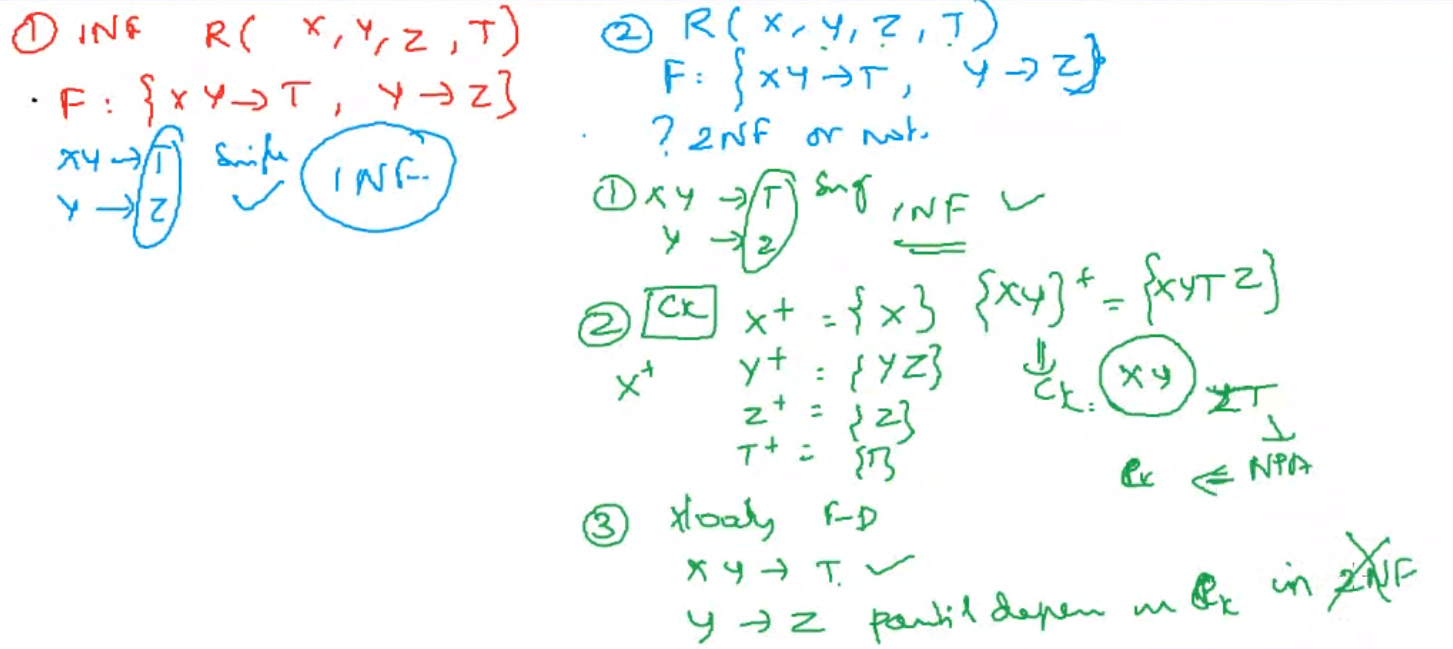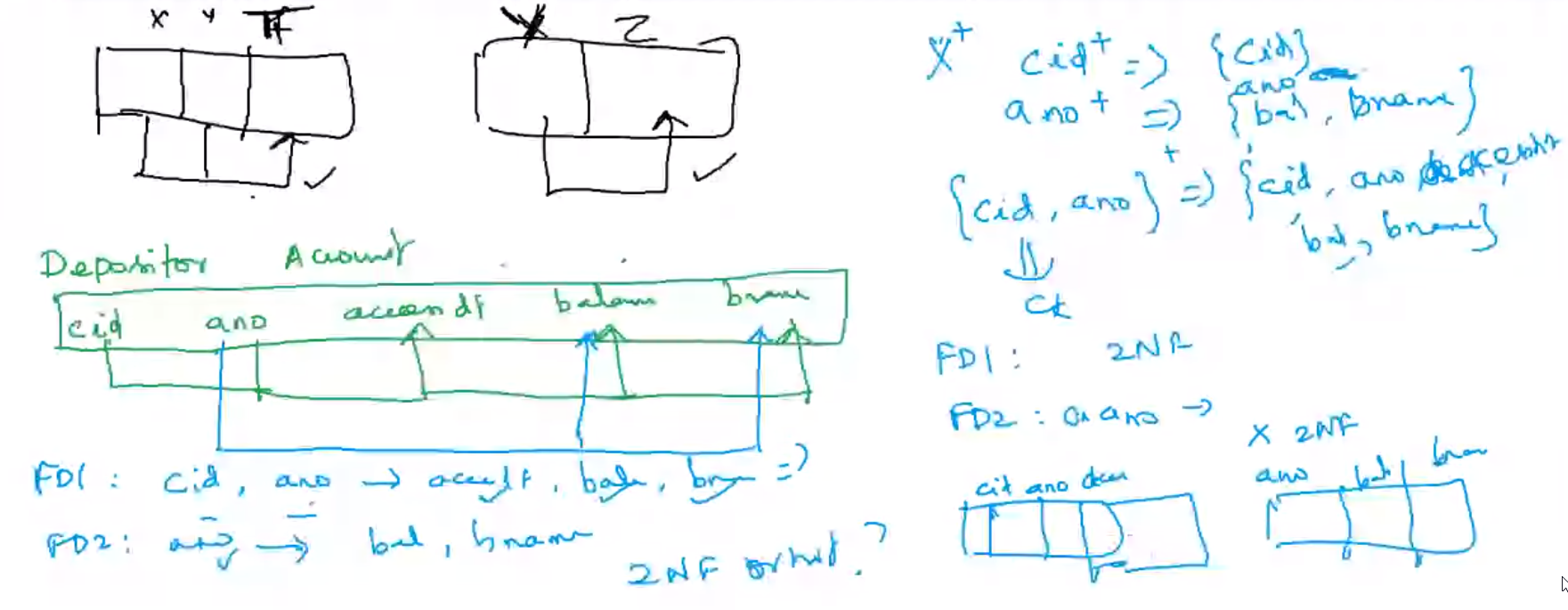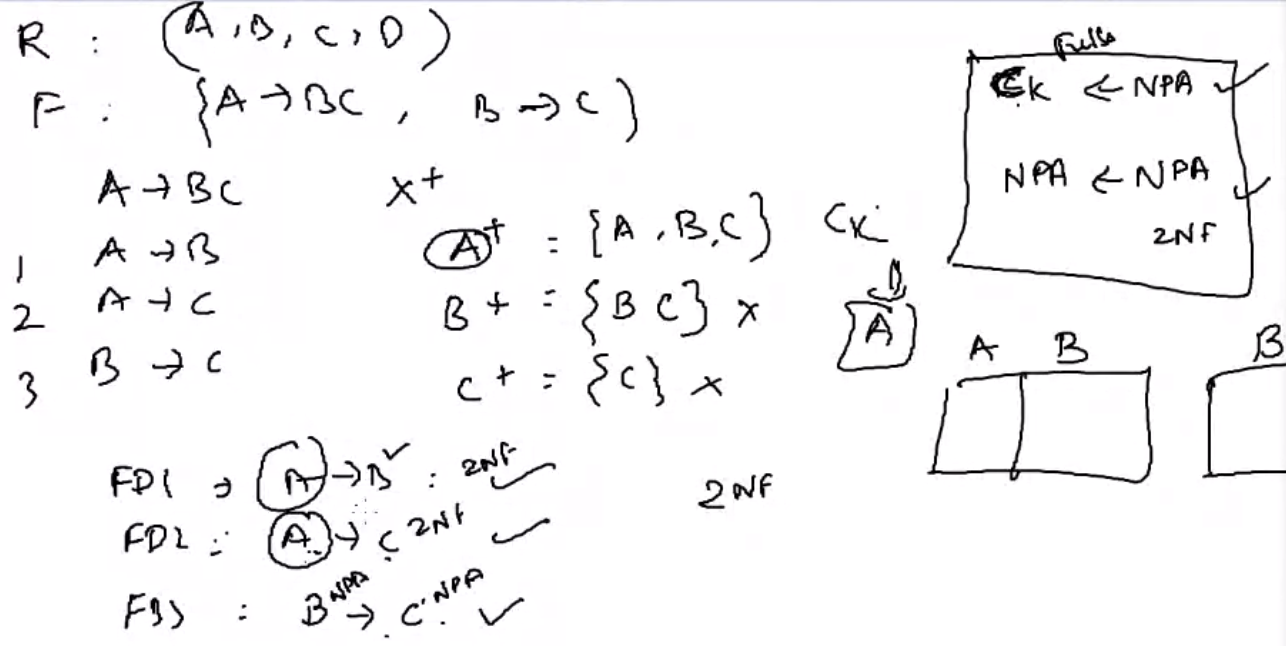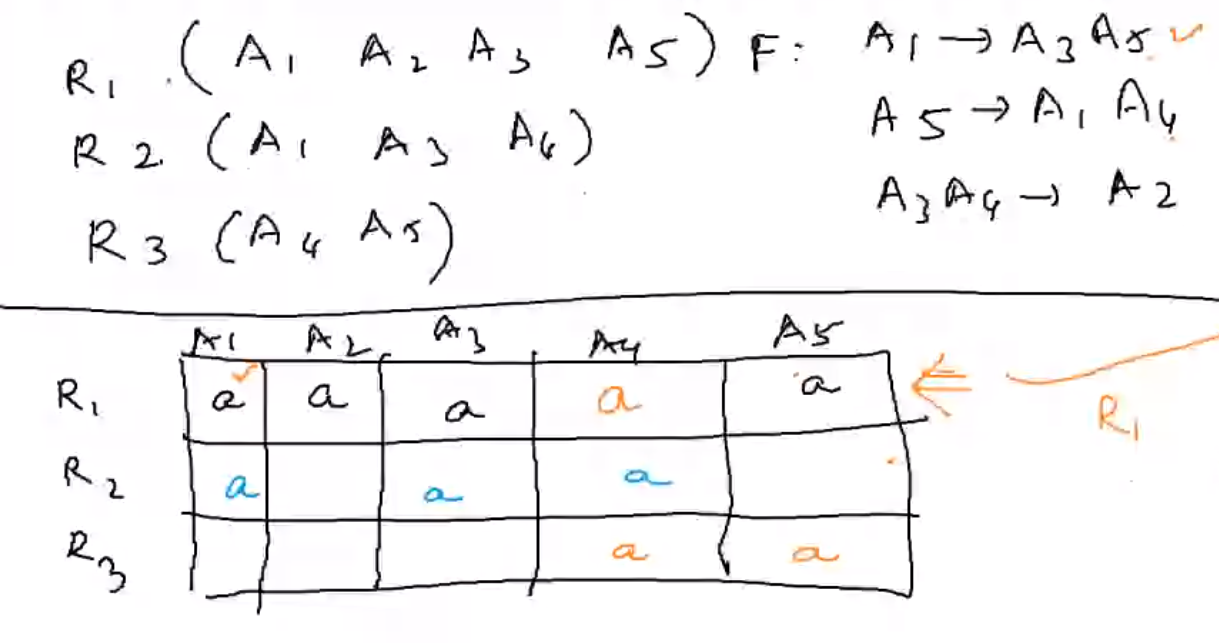Week 9#
Lecturer: Uma Maheswari, Faculty for BITS Pilani WILP
Date: 16/Oct/2021
Topics Covered#
Normalization or Logical Design#
Functional Dependencies#
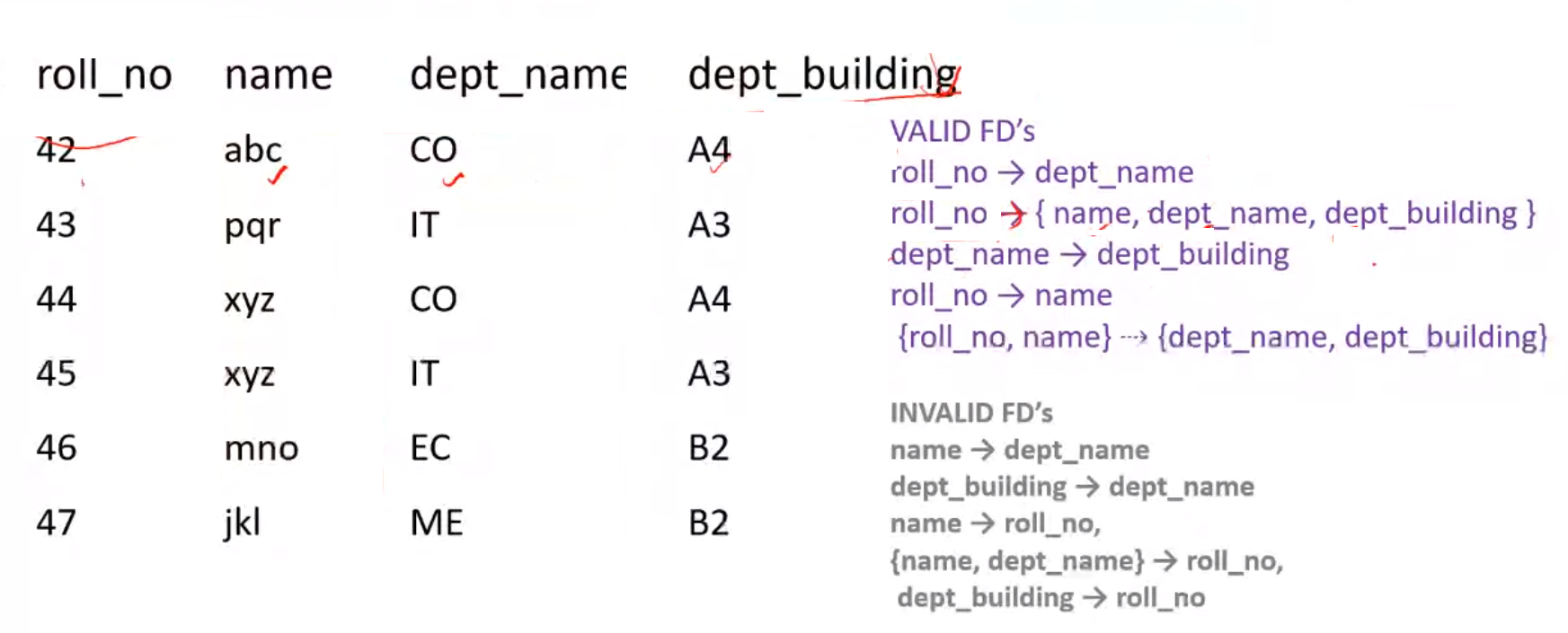
Here you can see that the \(roll_no\) is a functional dependency because it can be used to get other values
Key Terms#
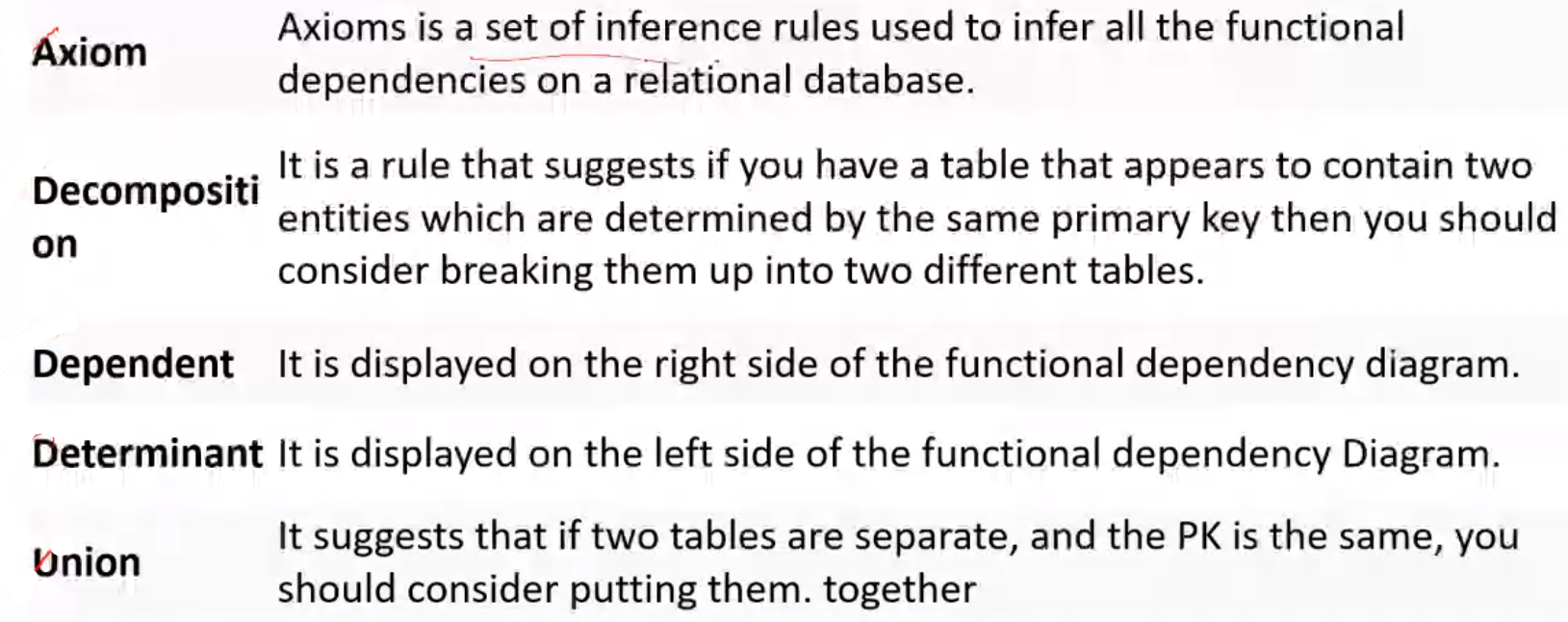
Armstrong's axioms/properties of functional dependencies#
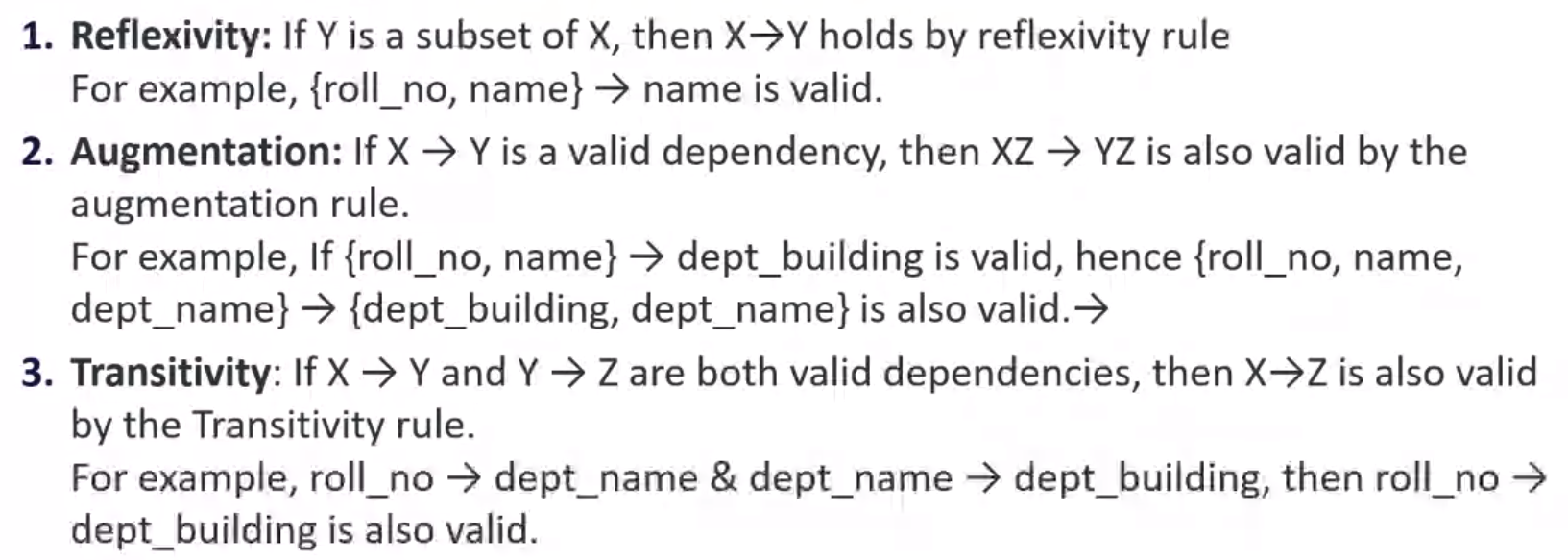
Functional Dependency#

Multivalued Functional Dependency#
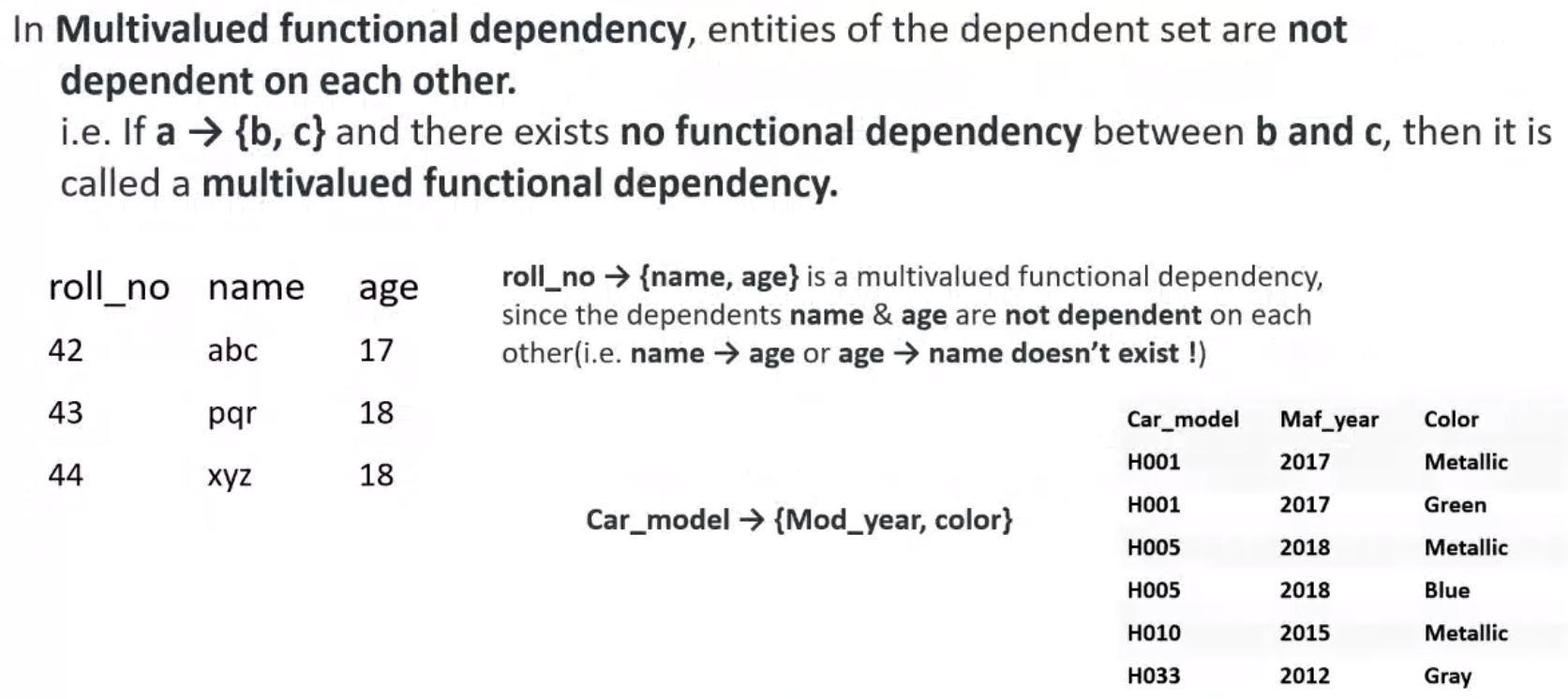
Trivial Functional Dependency#
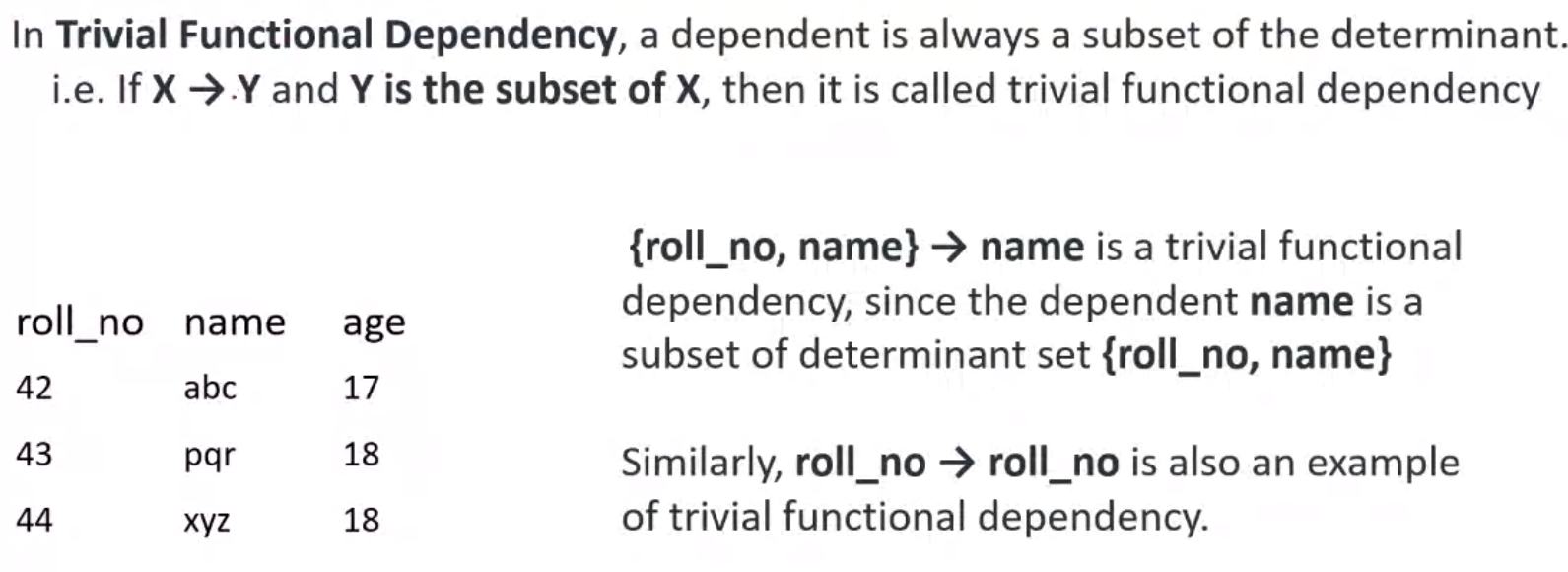
Non Trivial Functional Dependency#
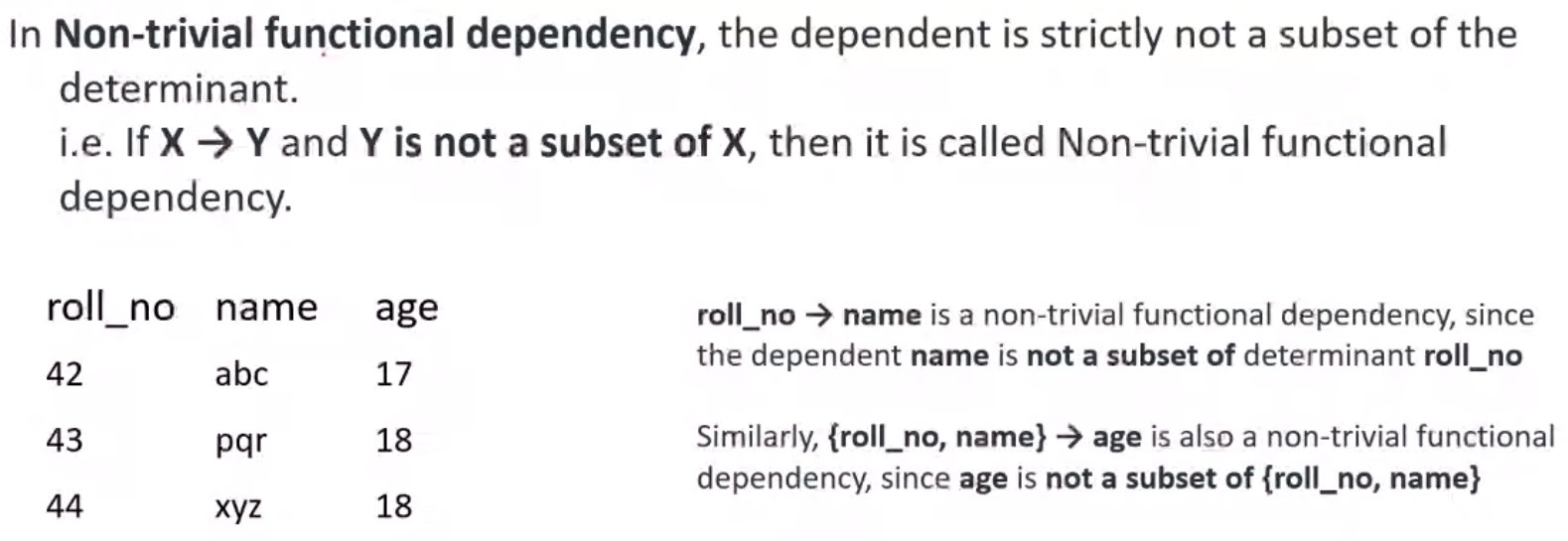
Transitive Functional Dependency#
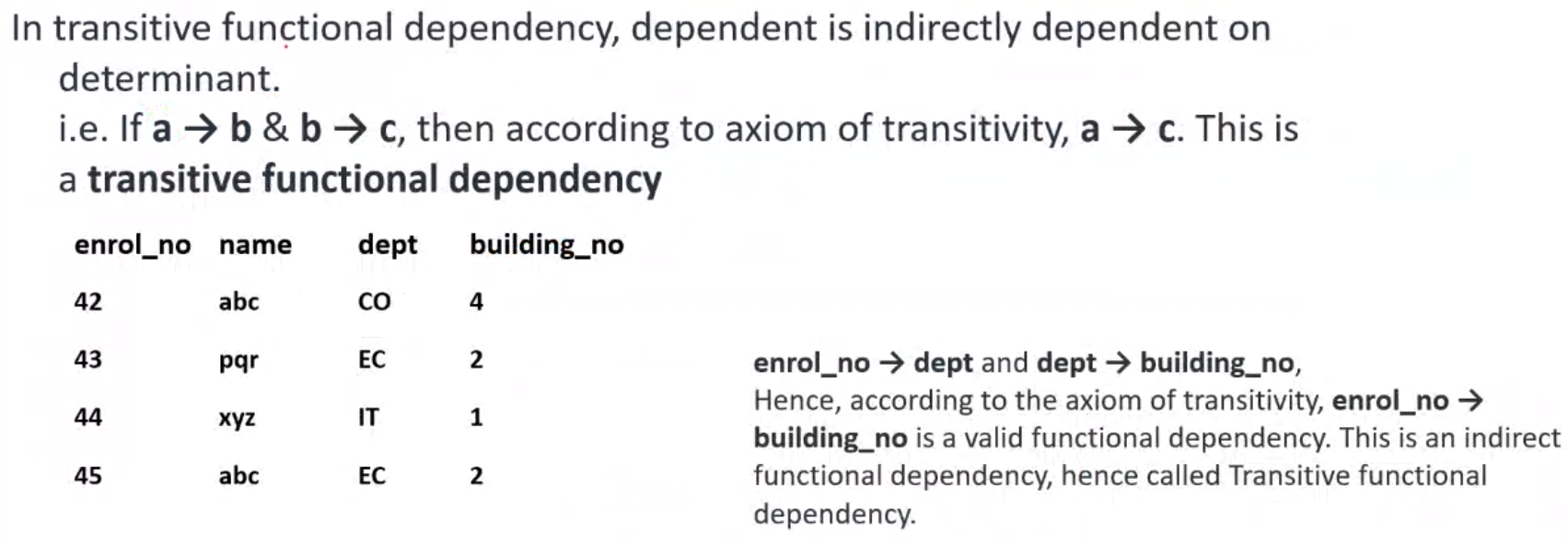
Keys#
Primary Keys#
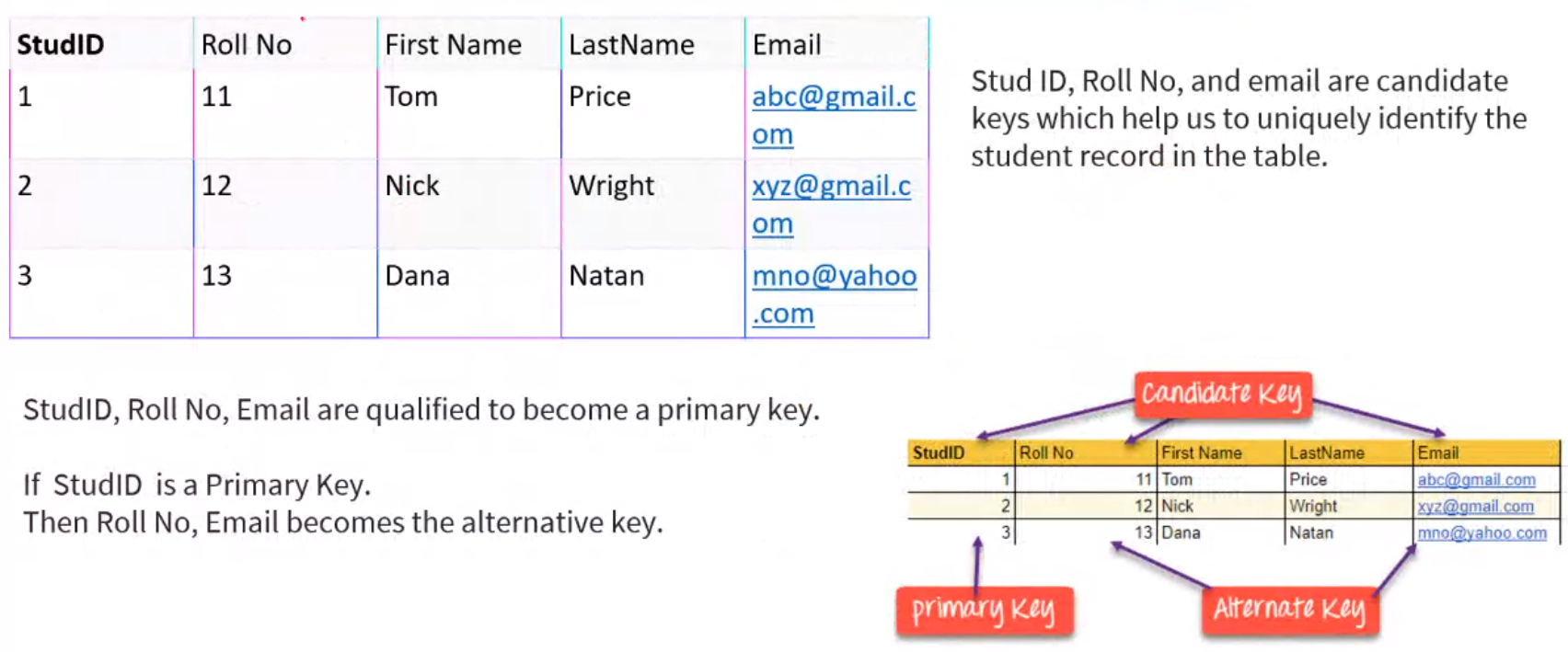
Foreign Keys#
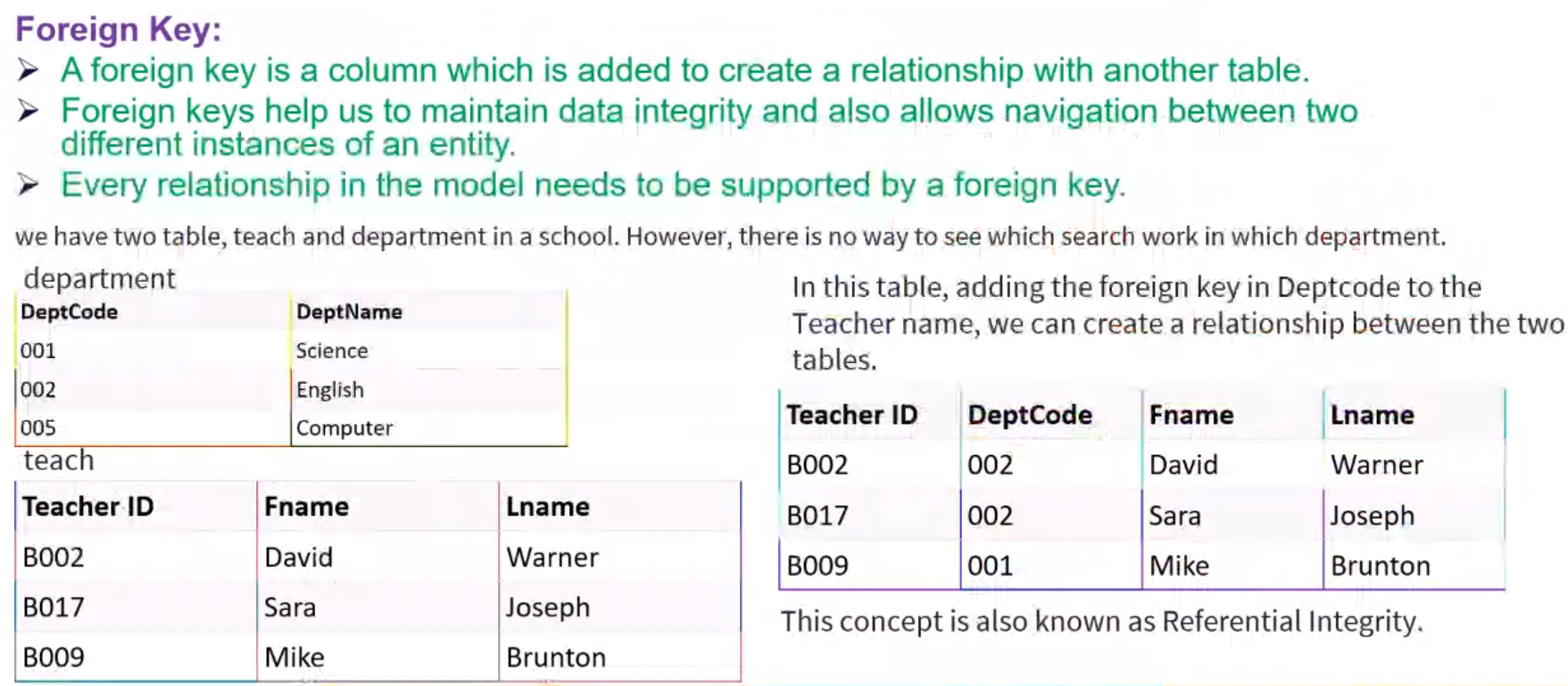
Foreign Keys help in maintaining the Referential Integrity between tables
Compound Keys#
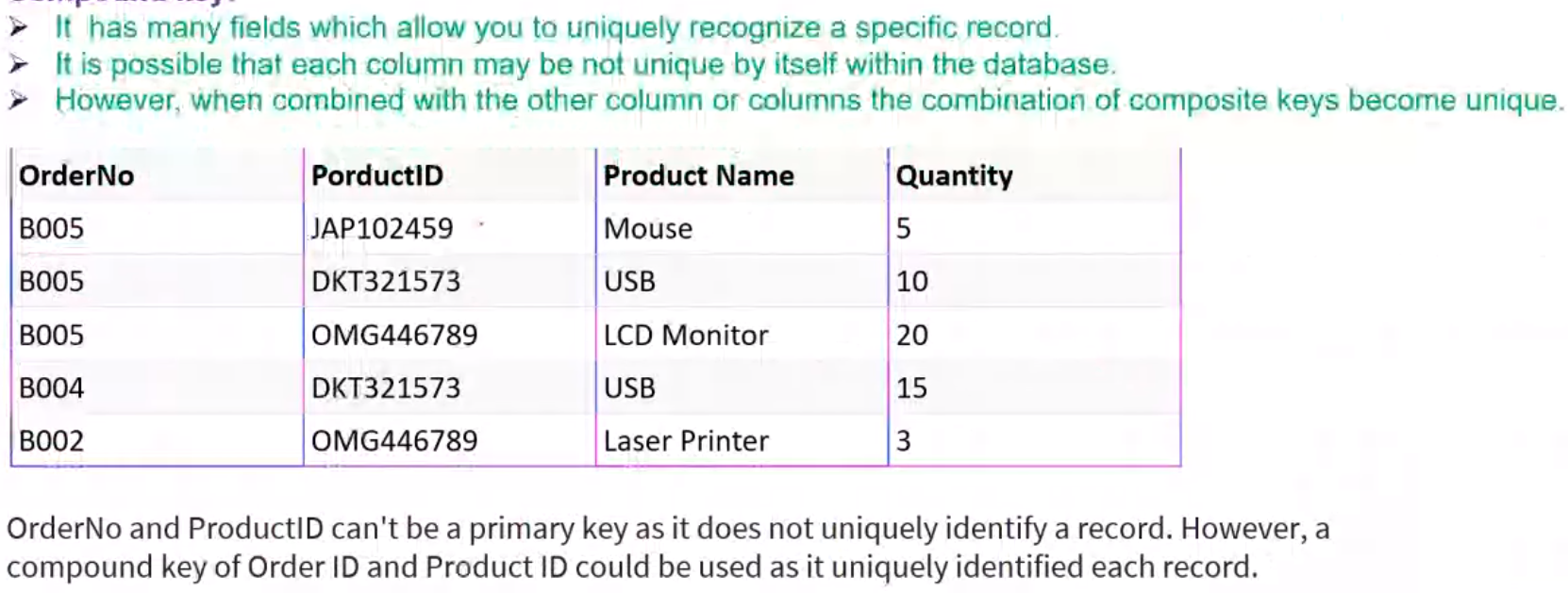
Composite Keys#
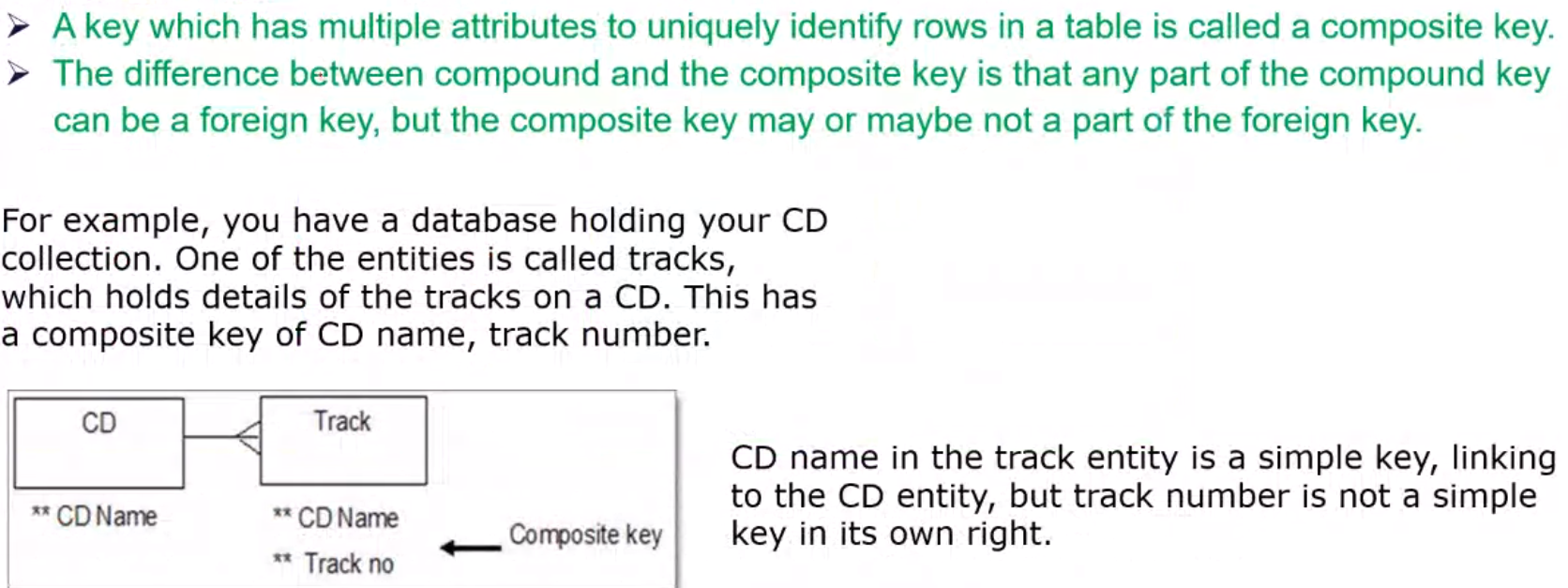
Surrogate Key#
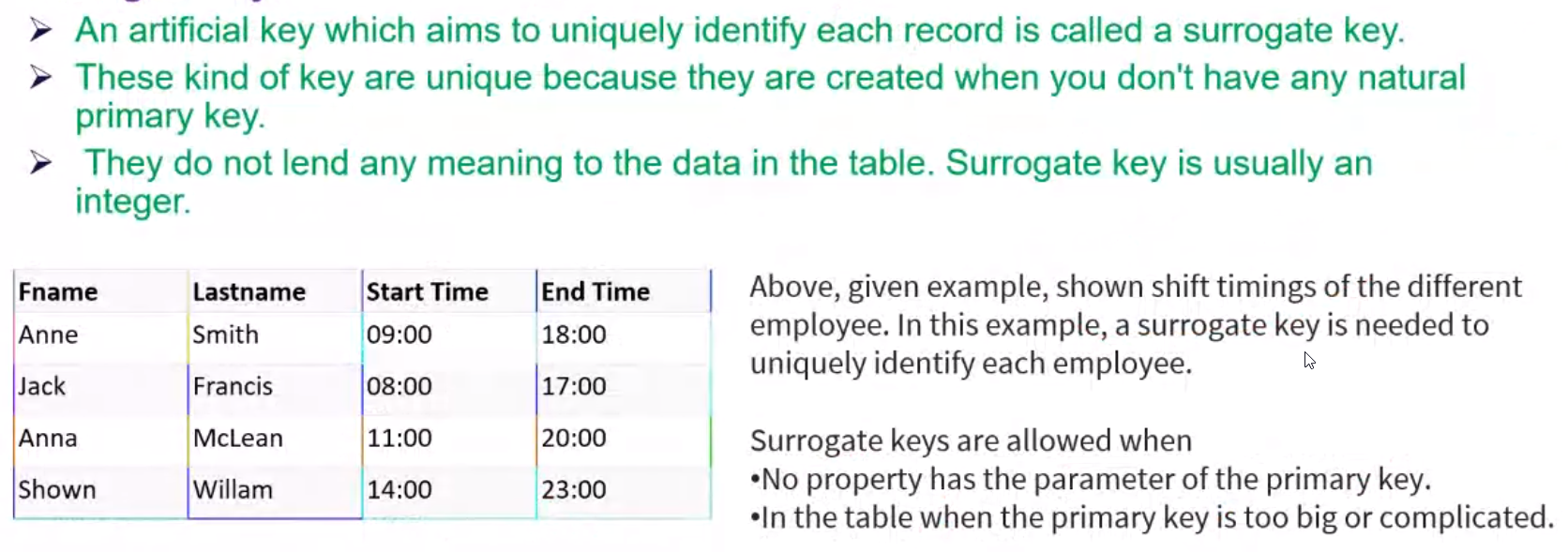
The DBMS automatically creates a surrogate key
Normalization#

Tutorial#
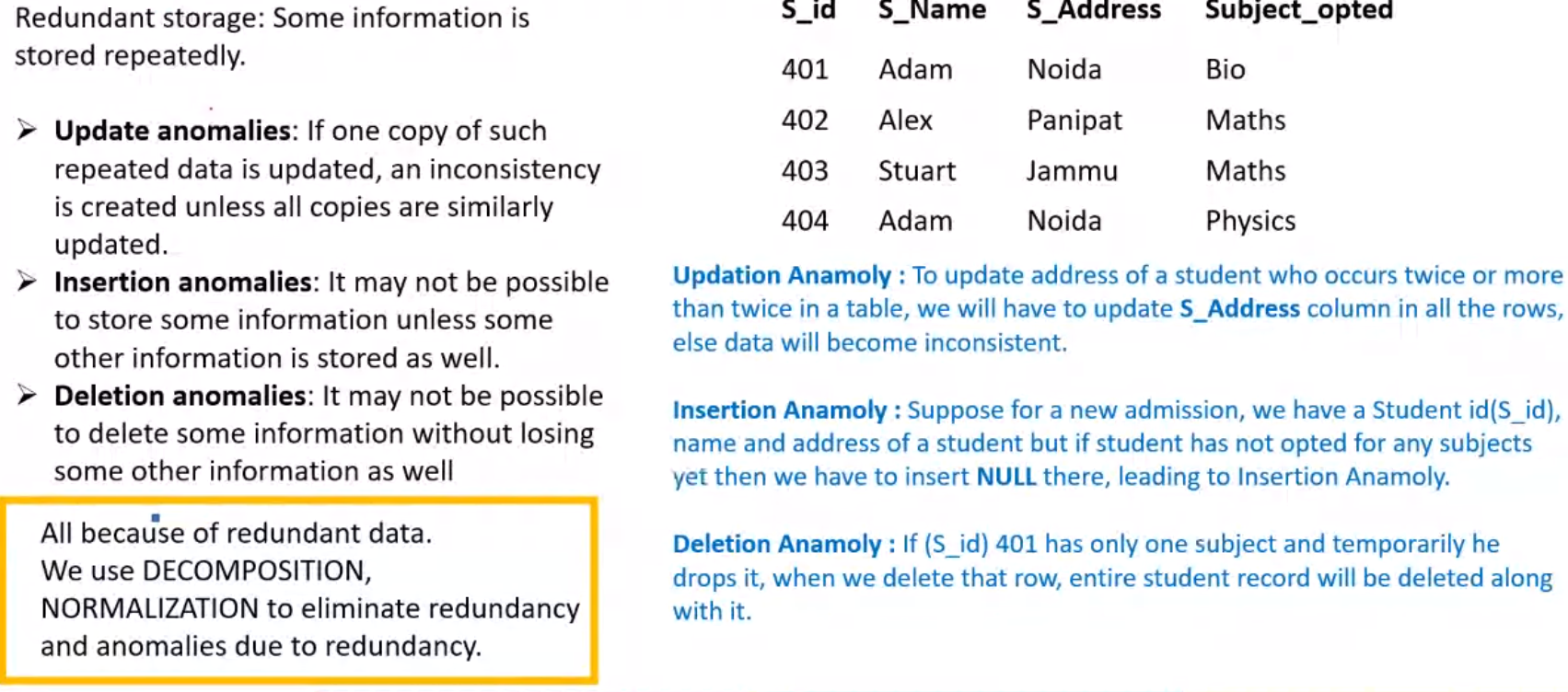
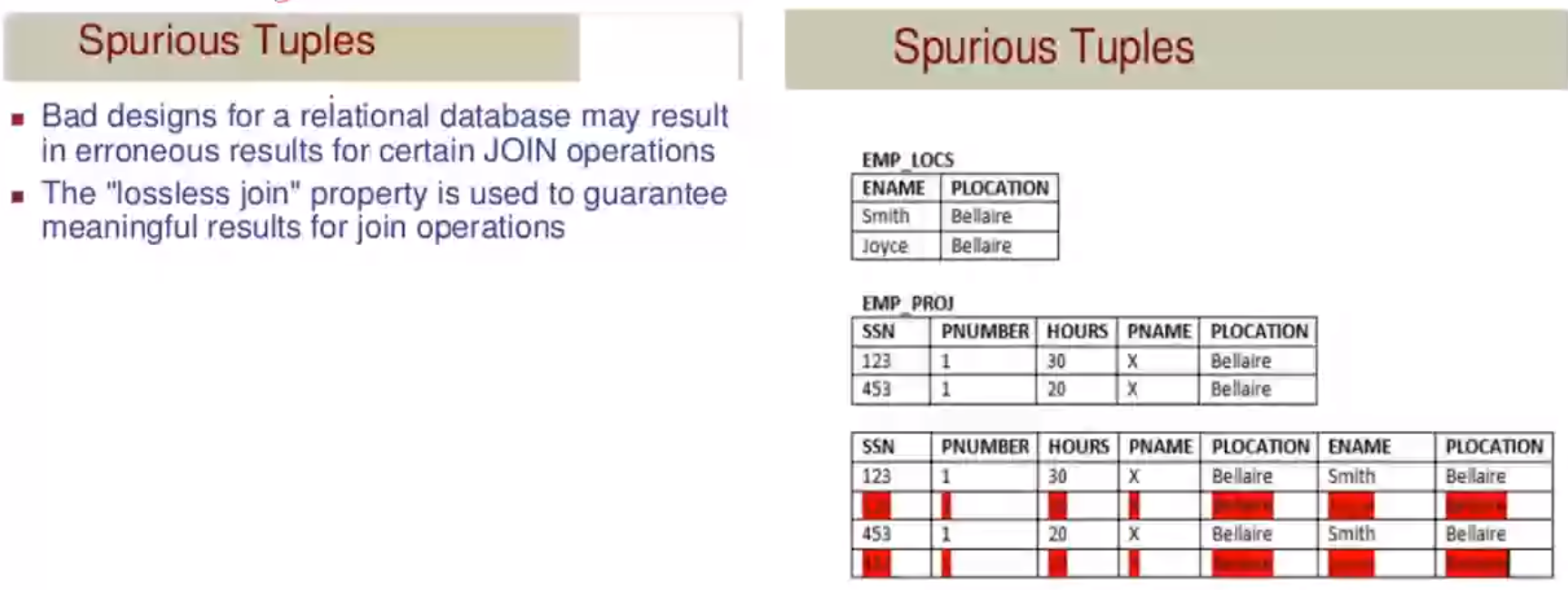
Normal Forms#
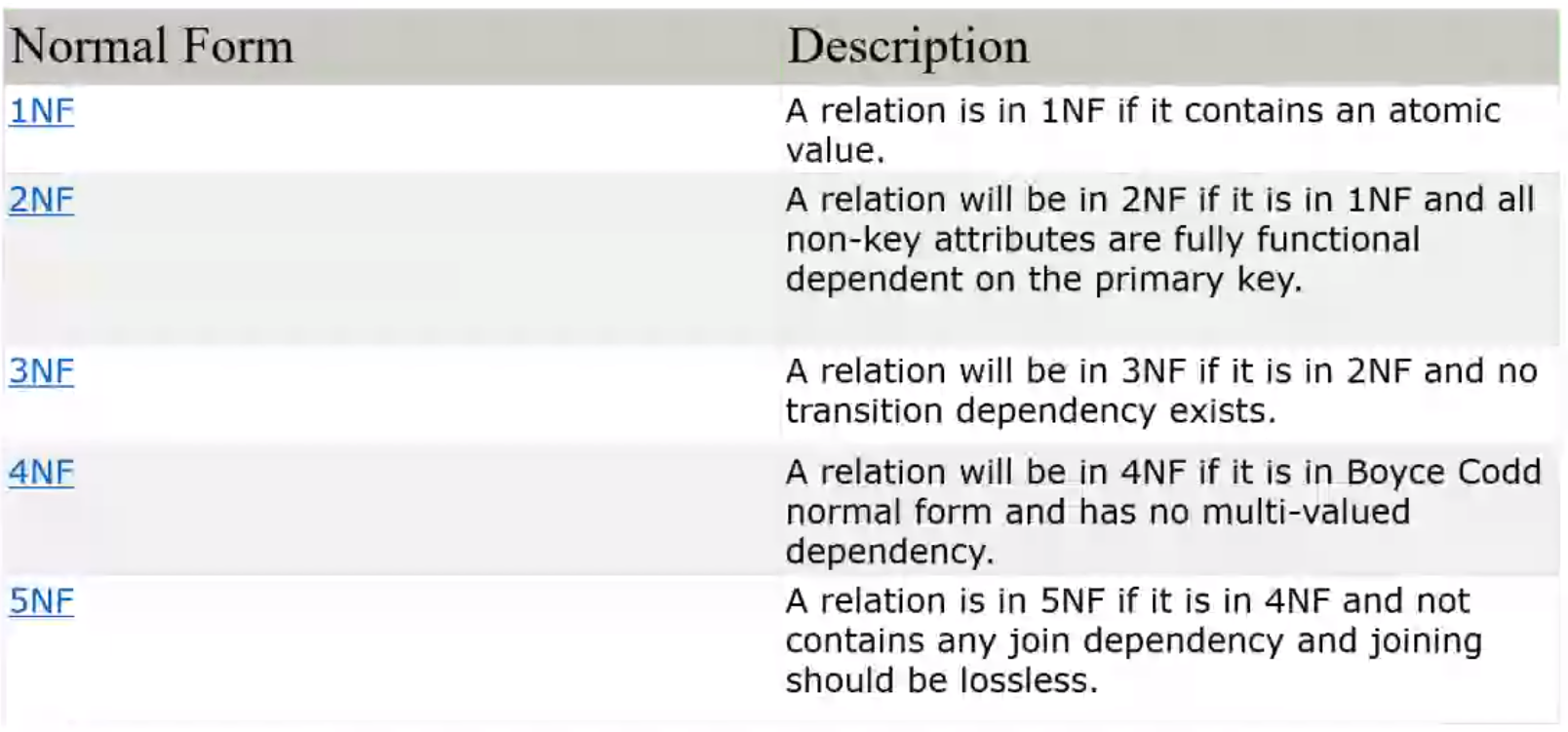
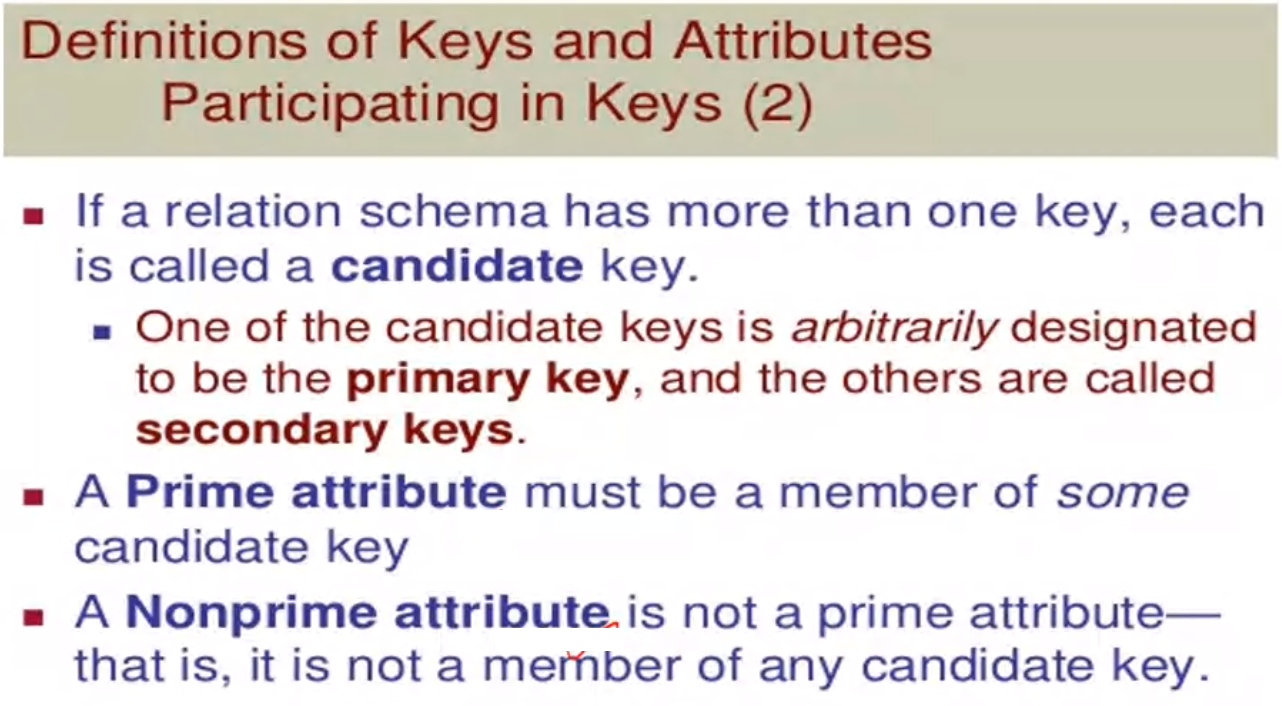
1NF#
In a functional dependency if the RHS has only one attribute then it is in 1NF
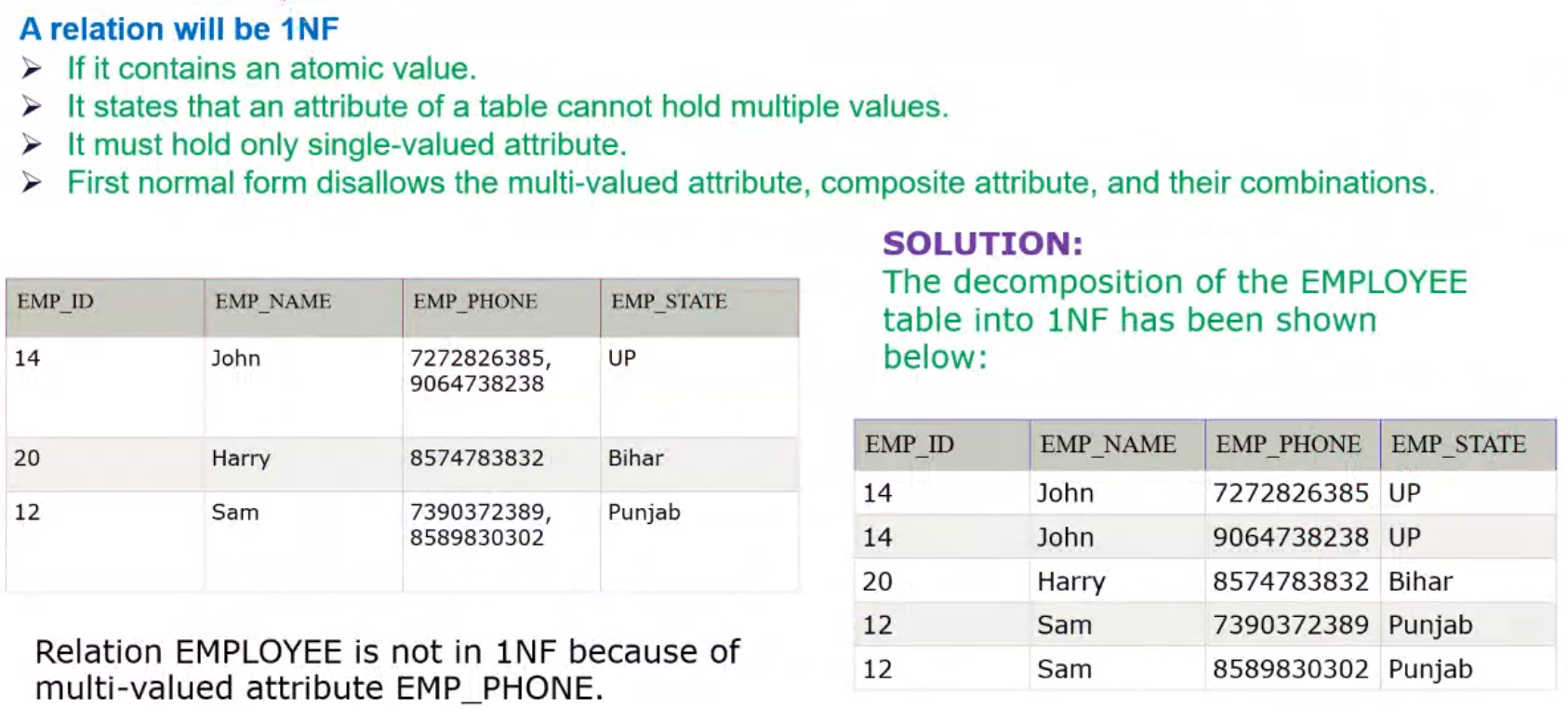
Another way to do this is as follows:
Employee Details:
| EMP_ID | EMP_NAME | EMP_STATE |
|---|---|---|
Employee Phone Numbers:
| EMP_ID | PH_NO |
|---|---|
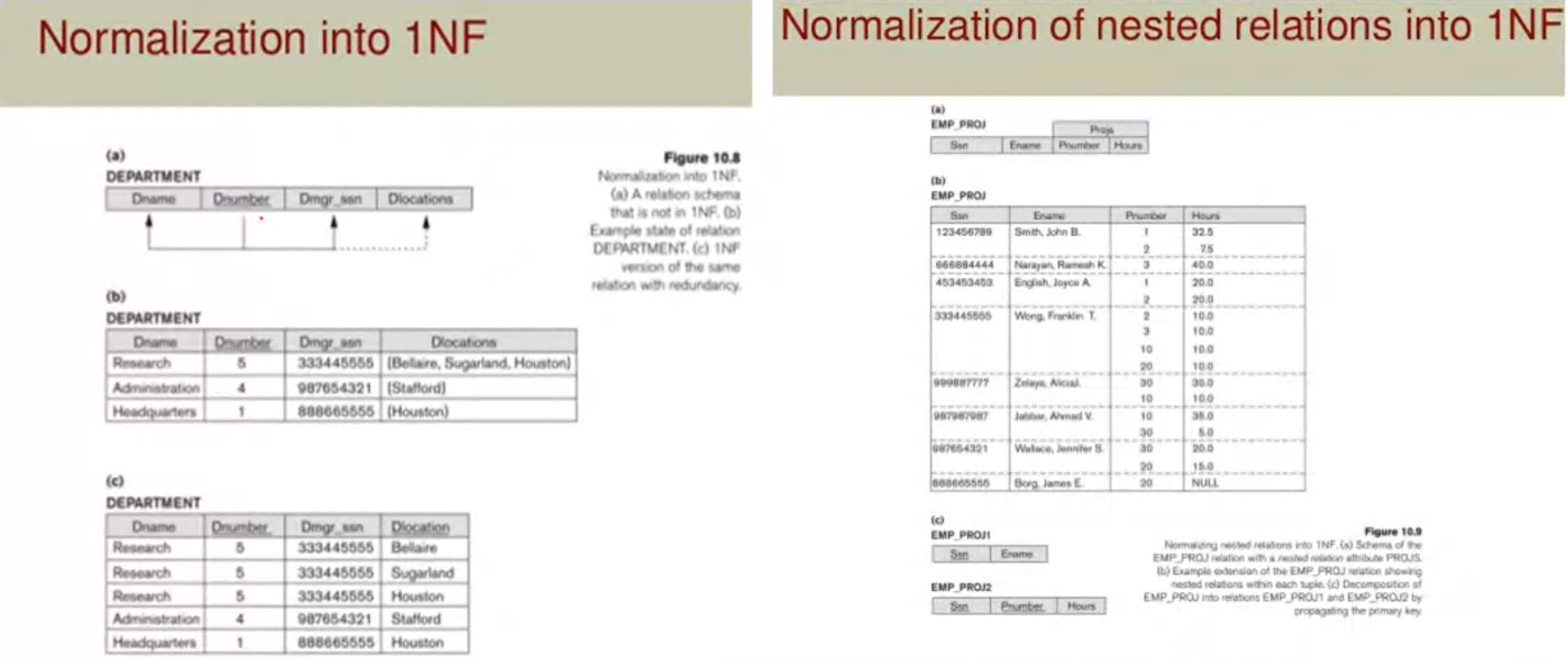
2NF#
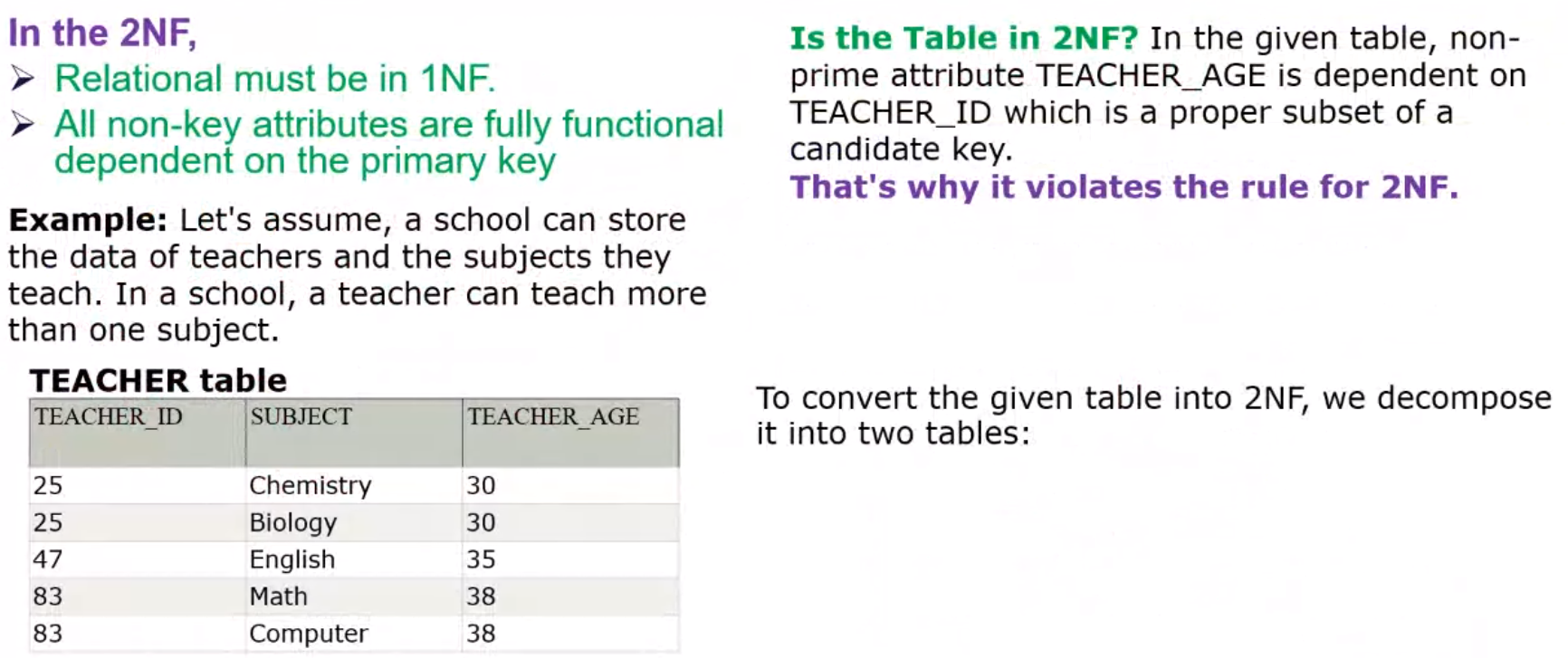
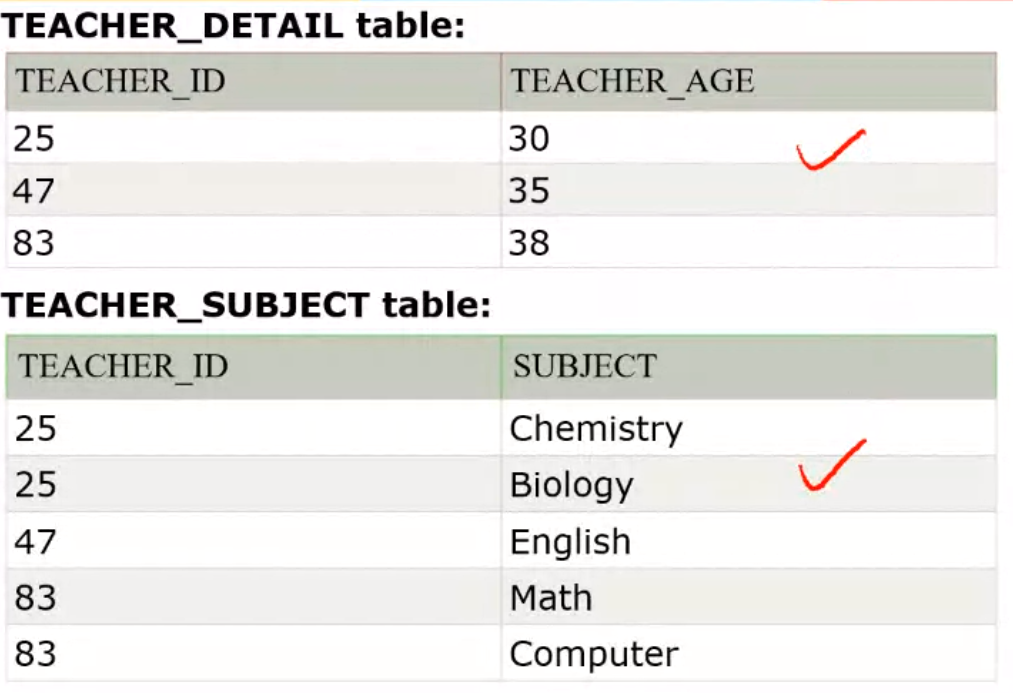

3NF#
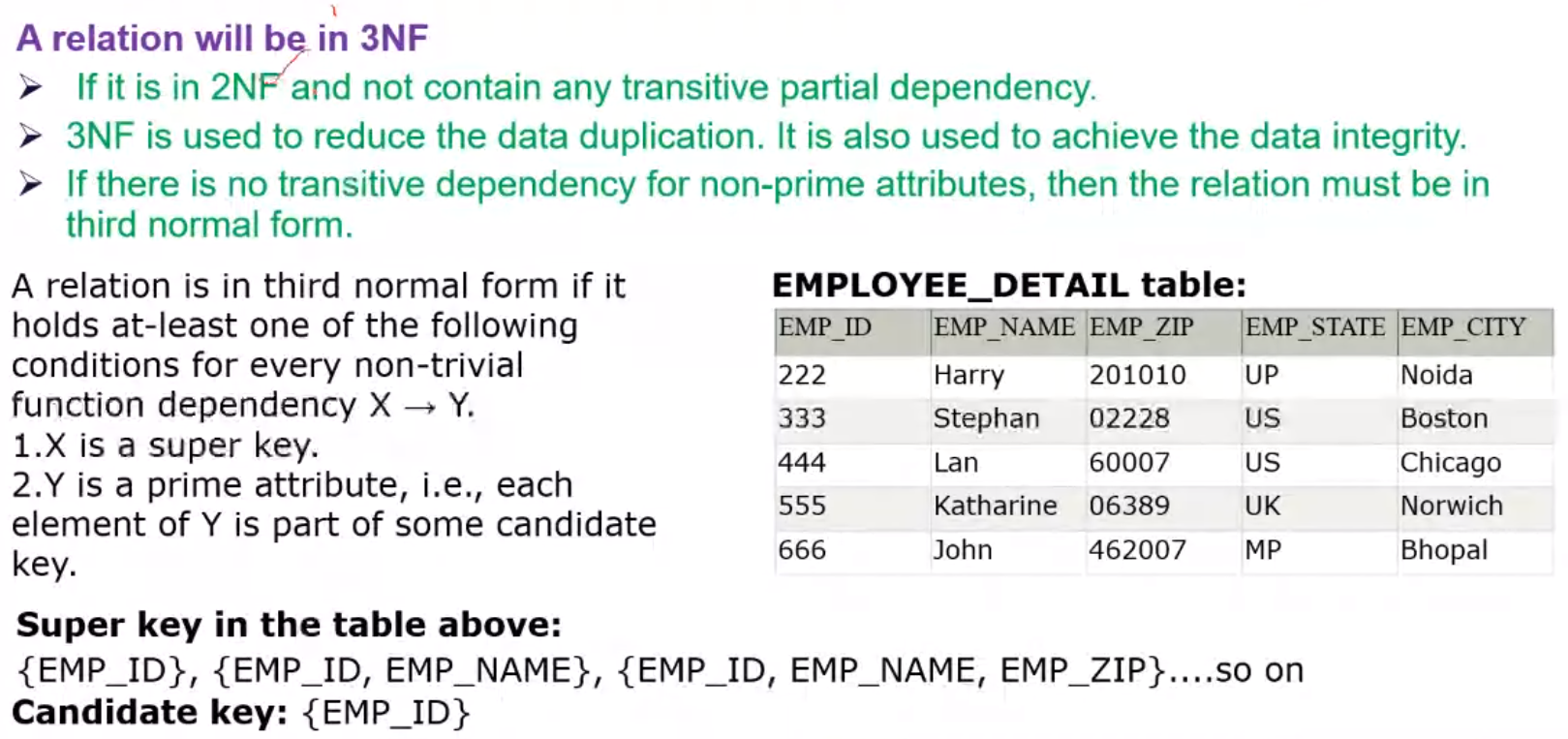
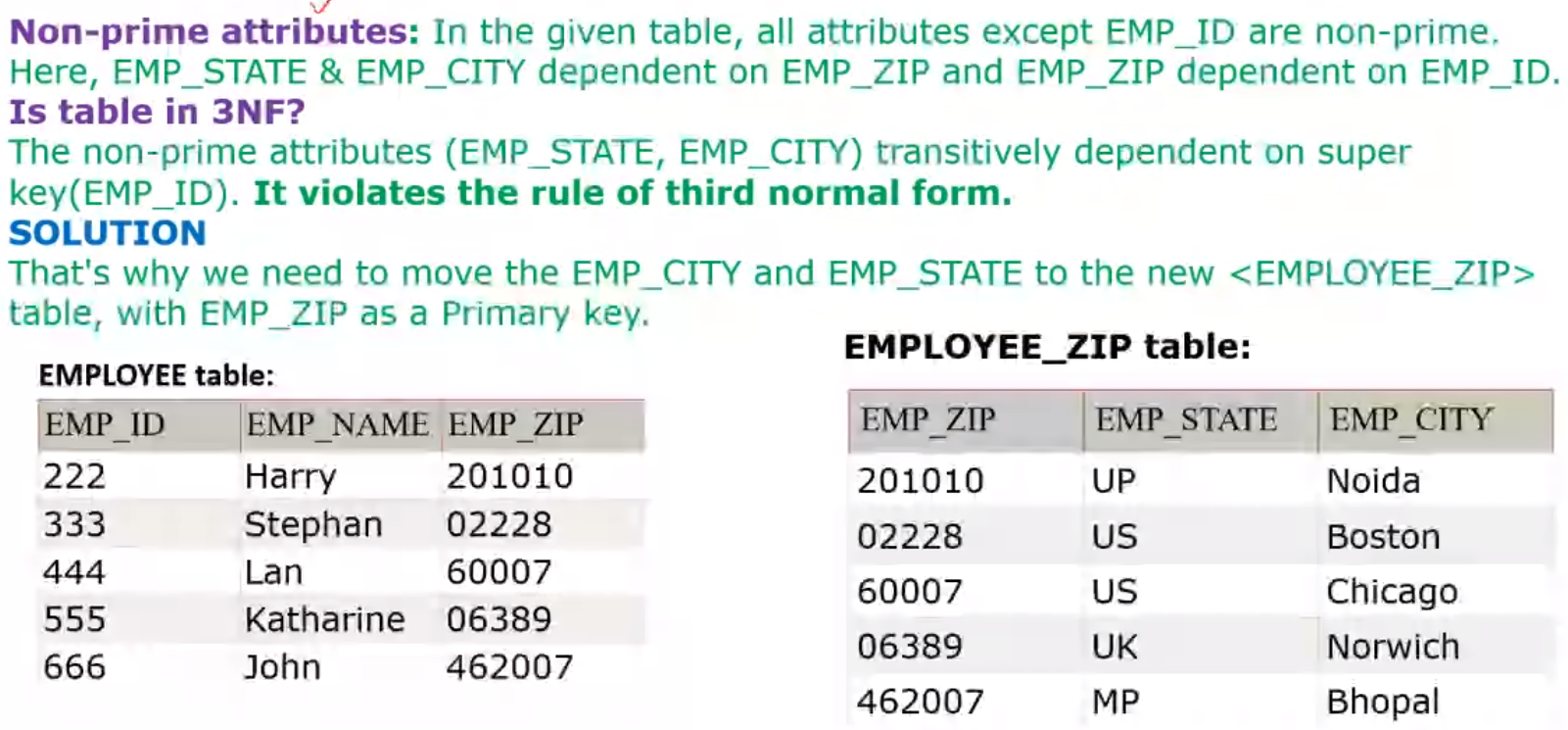
Summary of 1, 2, 3 NF#
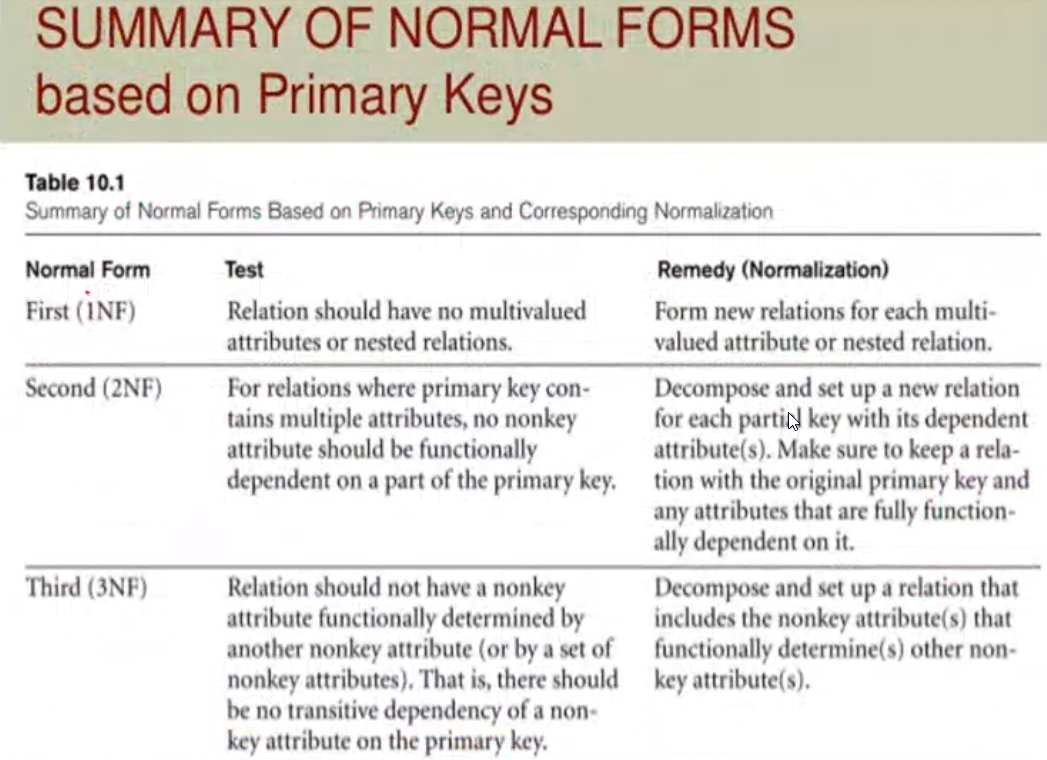
BCNF#
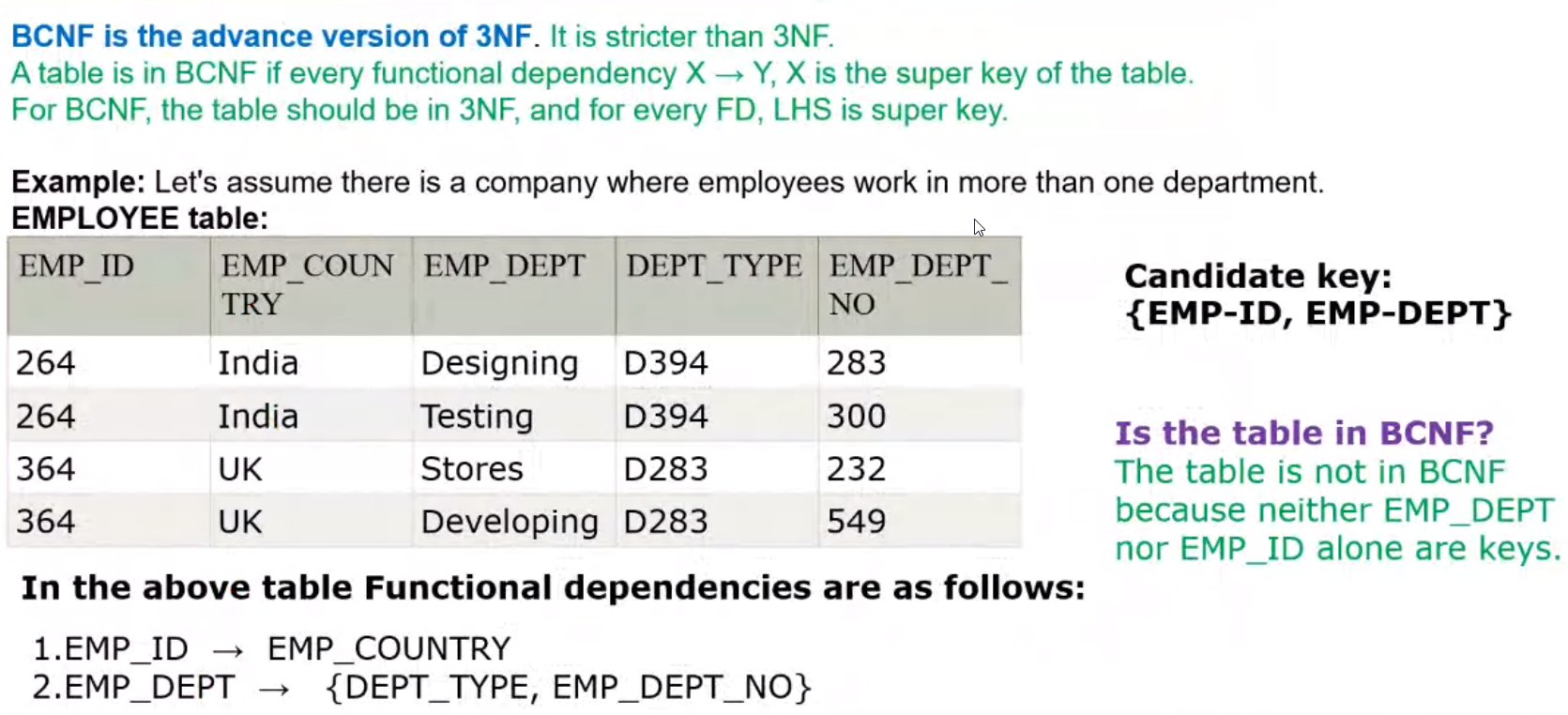
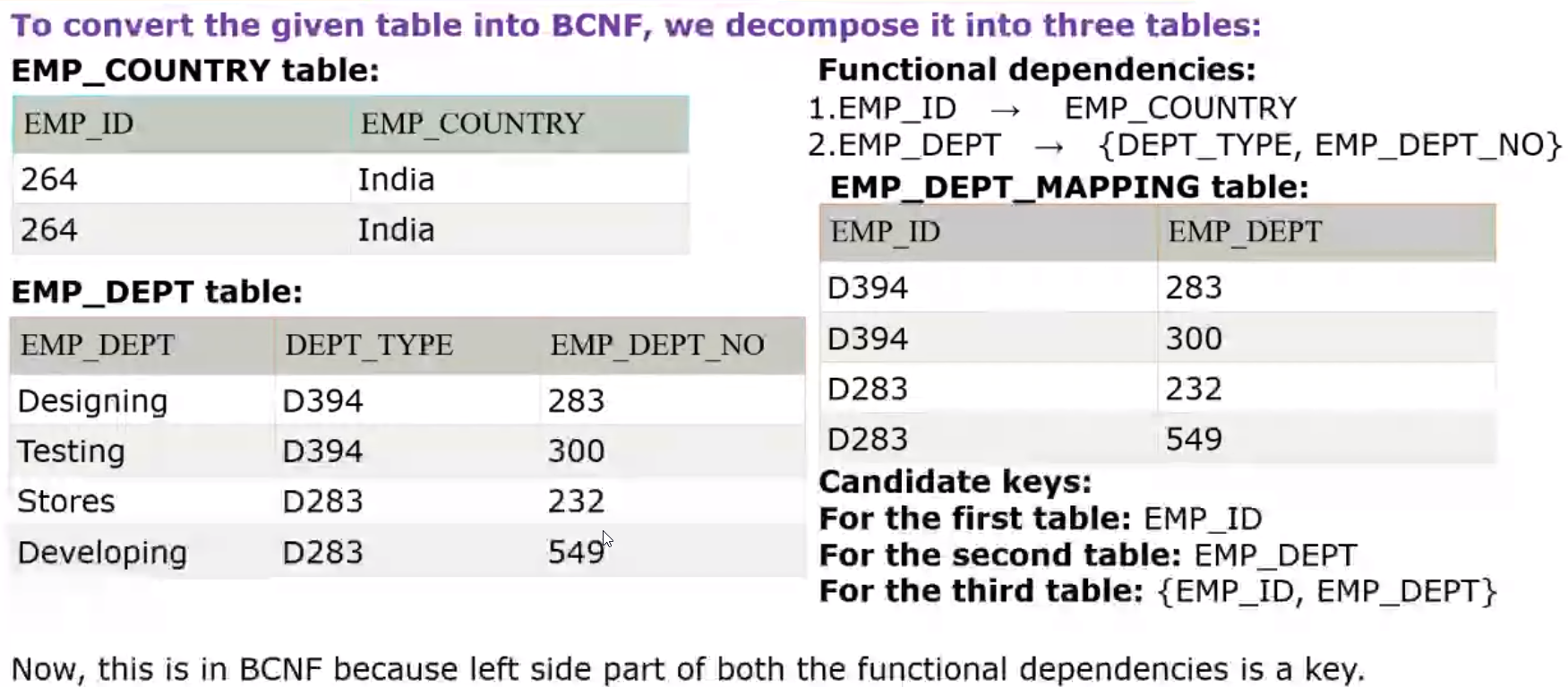
4NF#
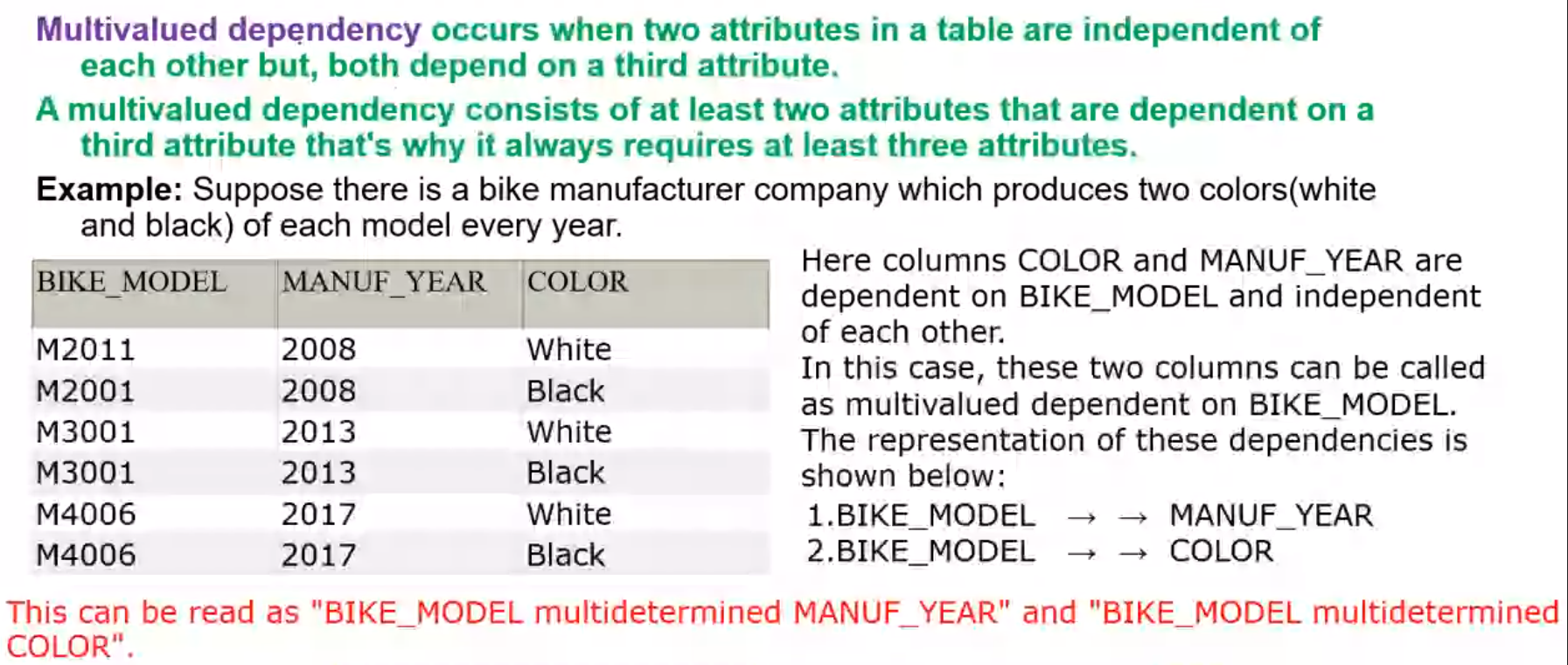
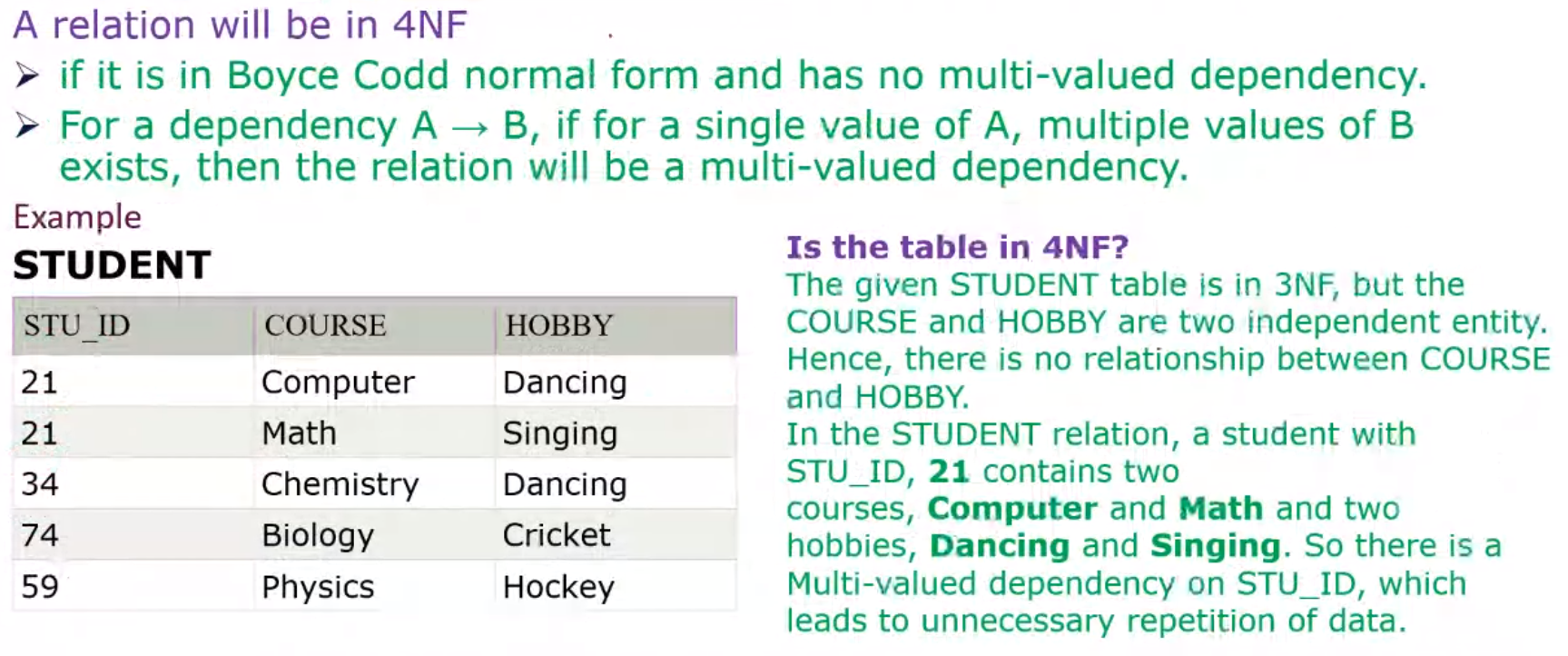

5NF#
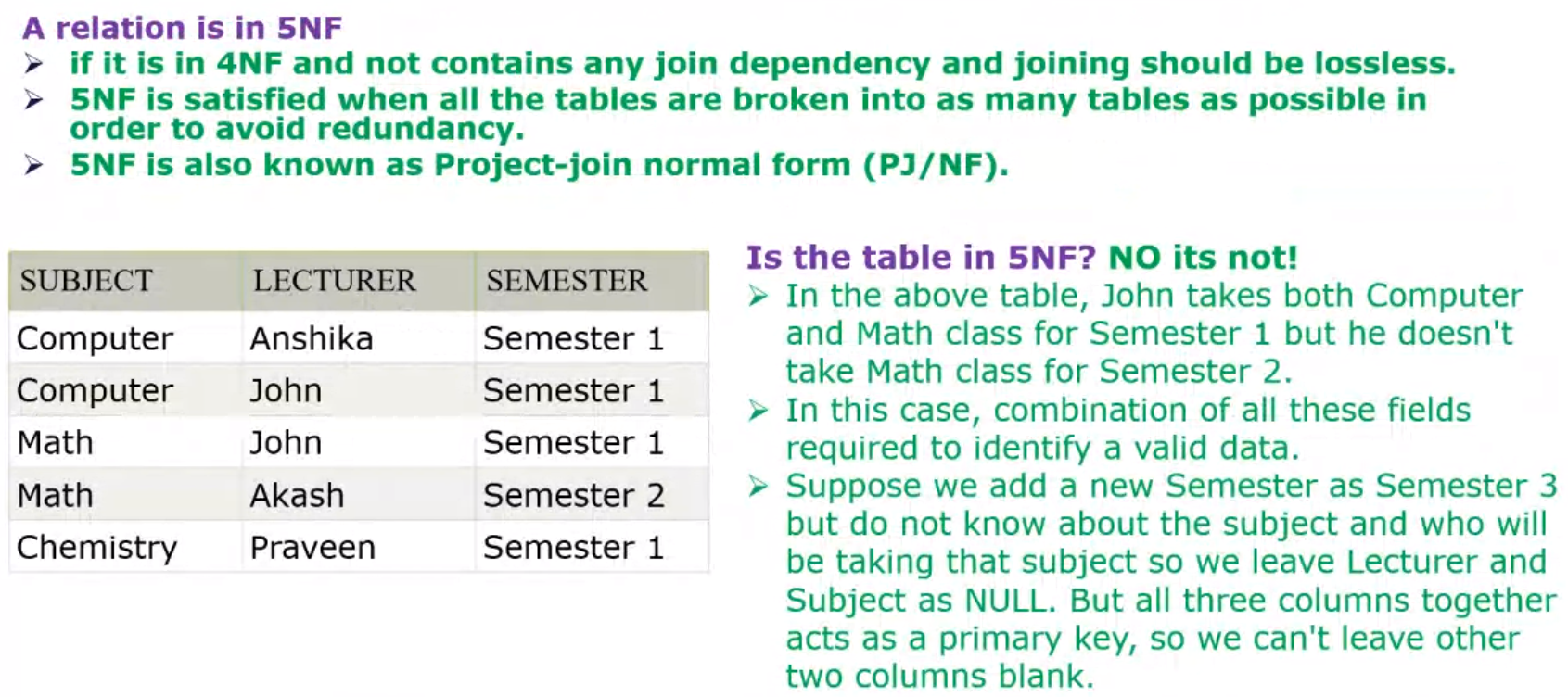
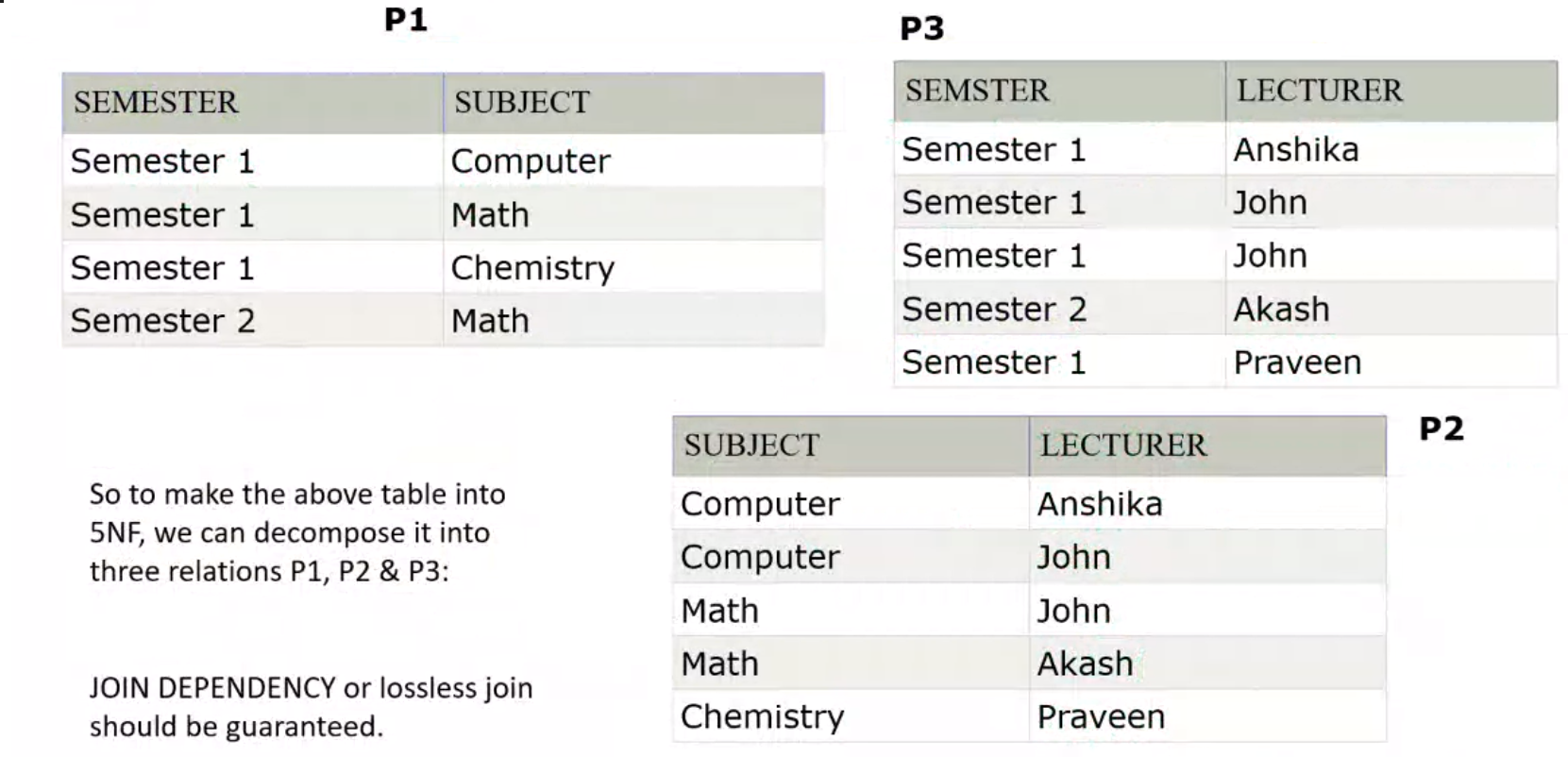
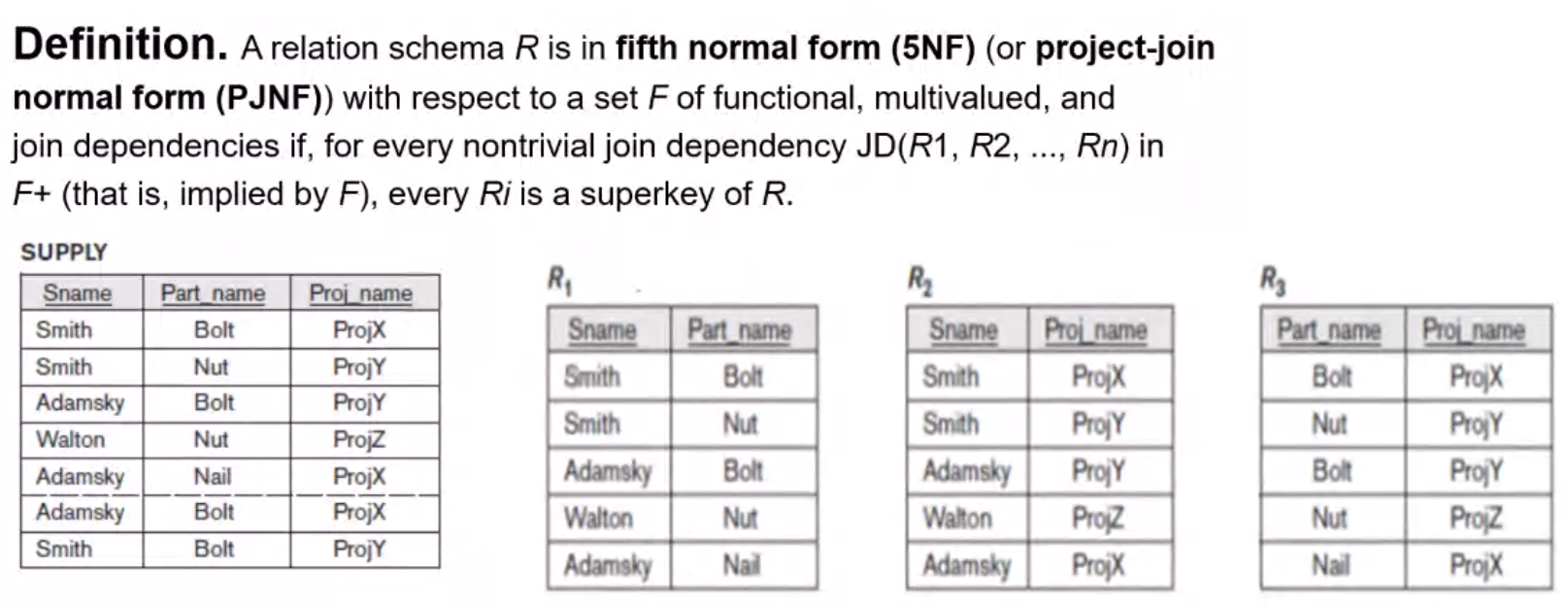
Spurious Tuples#
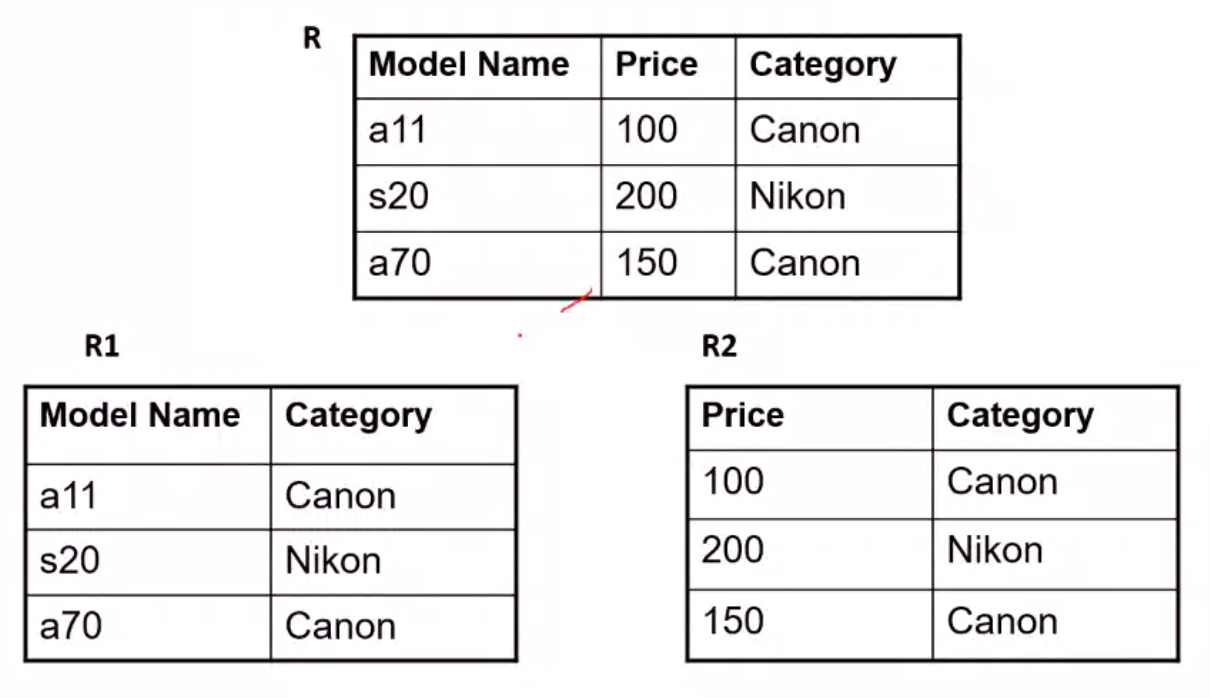
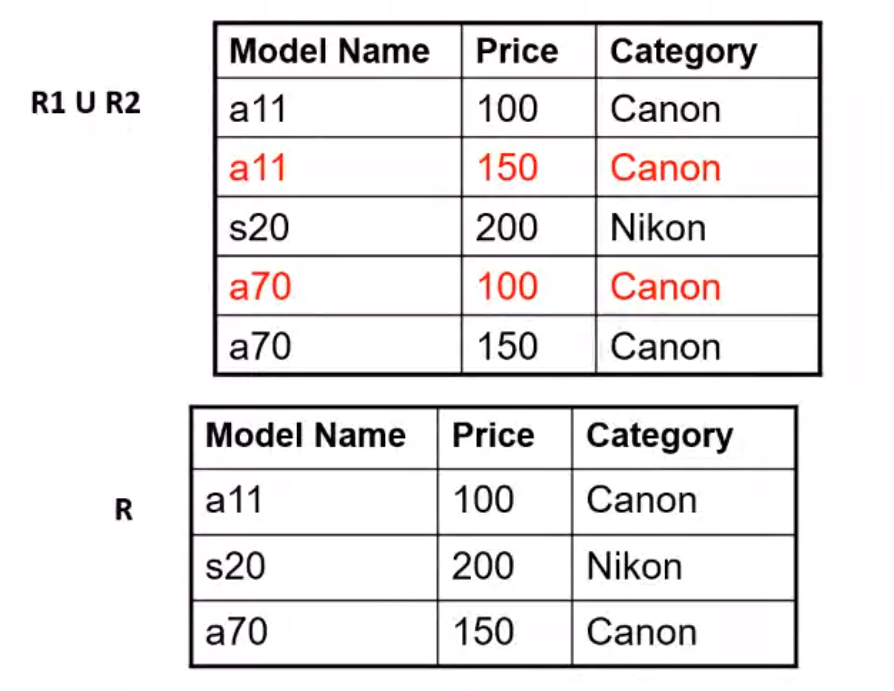
Lossless Decomposition#
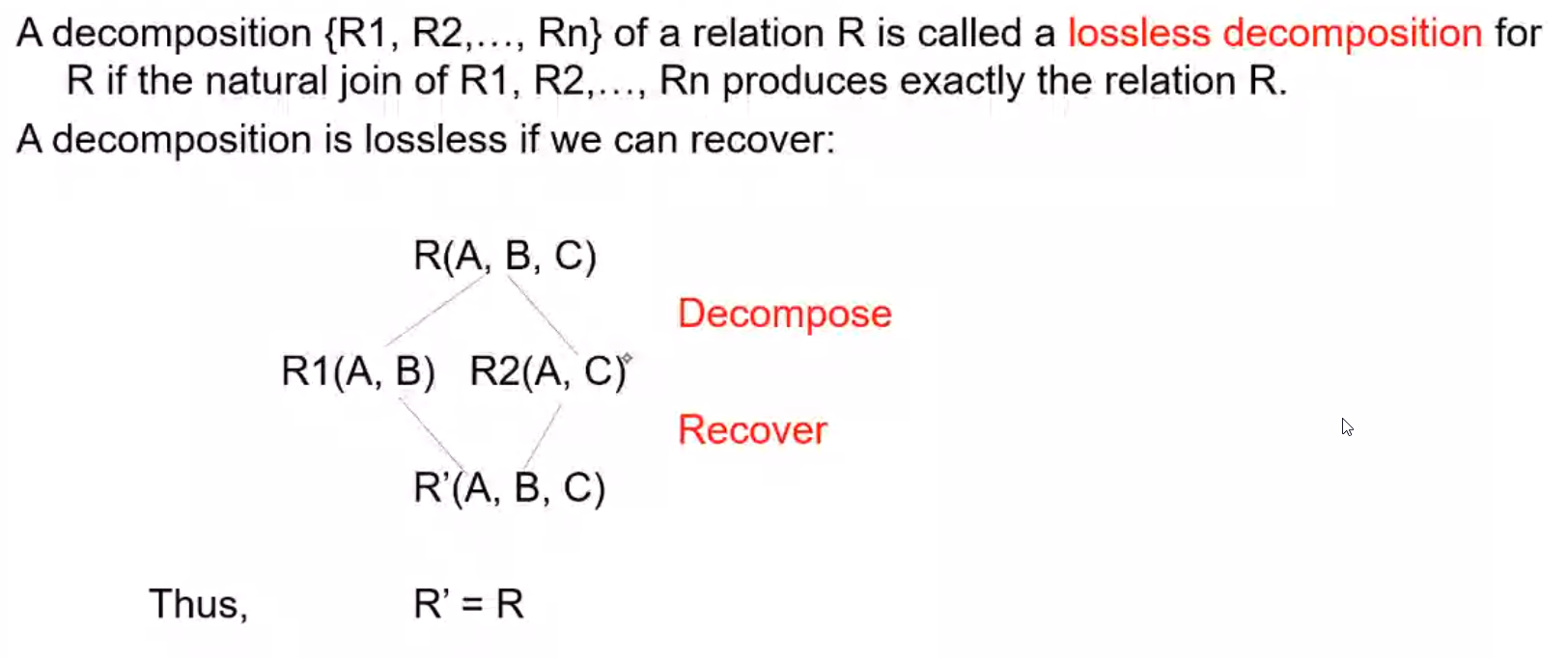
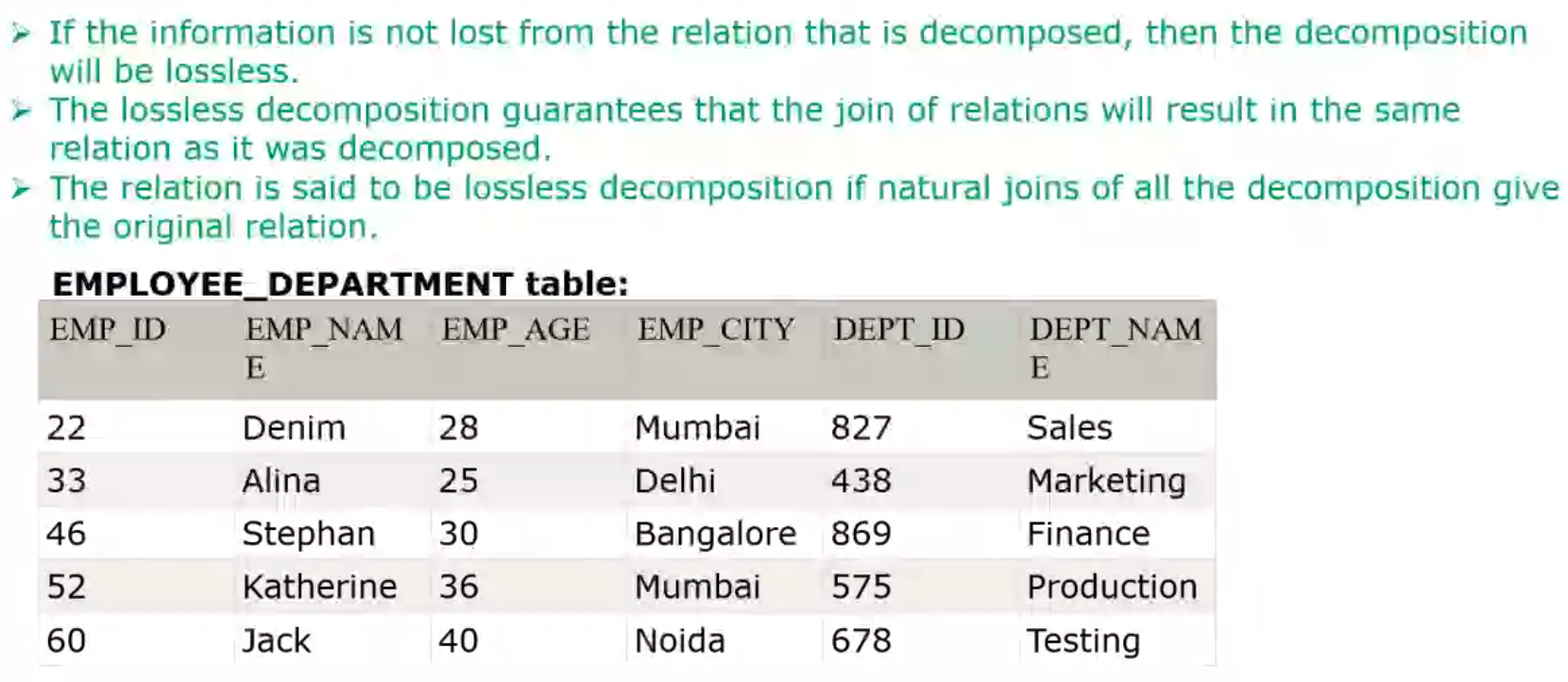
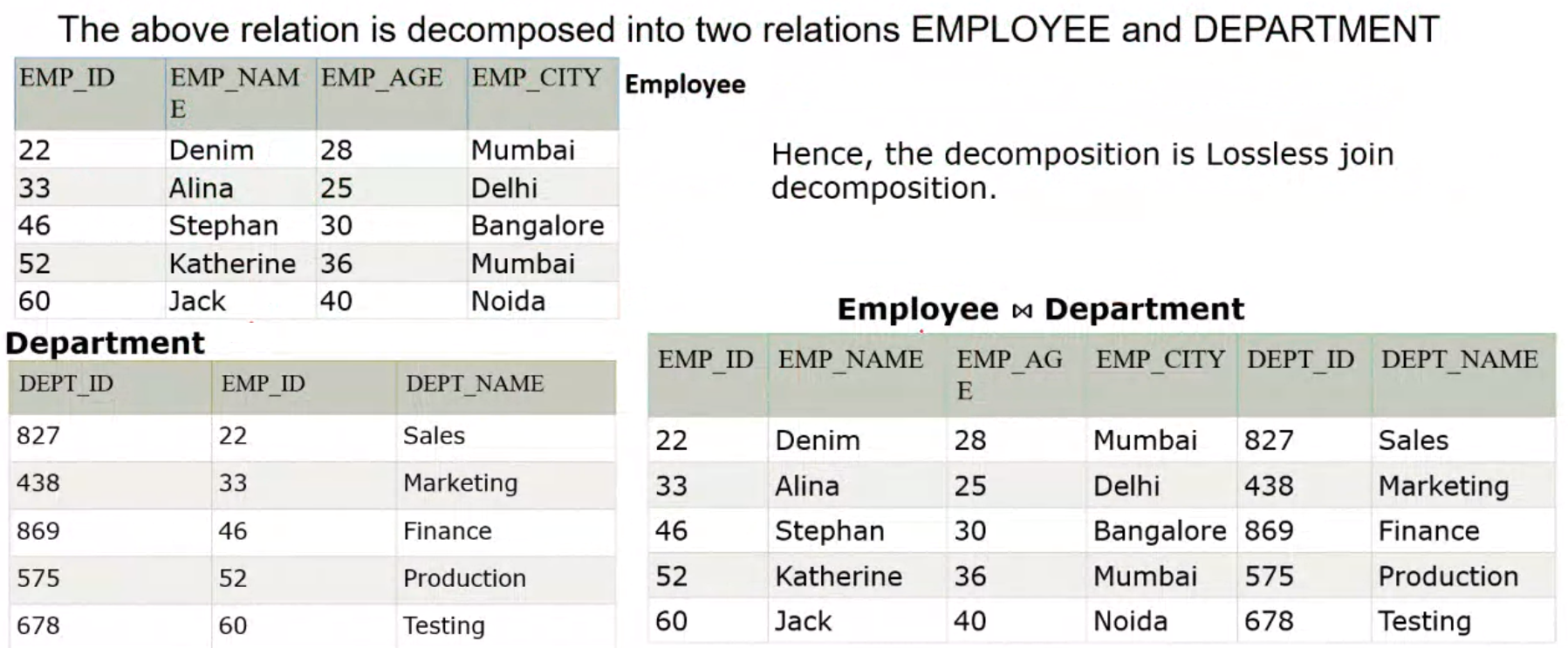
Extraneous Attributes#
Example 1#
\(R(A, B, C)\)
\(F: \{A \rightarrow B, B \rightarrow C\}\)
Since:
1. \(A^+ \implies \{A, B, C\}\), hence we can say that \(A\) is a \(CK\)
2. \(B^+ \implies \{B, C\}\), since all other attributes cannot be derived, \(B\) cannot be a \(CK\)
3. \(C^+ \implies \{C\}\), since all other attributes cannot be derived, \(C\) cannot be a \(CK\)
Example 2#
\(R(A, B, C, D, E)\)
\(F: \{A \rightarrow D, BC \rightarrow A, BC \rightarrow D, C \rightarrow B, E \rightarrow A, E \rightarrow D\}\)
\(B^+ \implies \{B\}\)
\(C^+ \implies \{C, B, A, D\}\)
Since C covers all attributes we can remove the extraneous attributes from:
\(BC \rightarrow A, BC \rightarrow D\) to \(C \rightarrow A, C \rightarrow D\)
Canonical/Minimal Cover Problem#
- RHS must be singleton
- Extraneous attributes must be resolved
- Remove redundant FD
Example#
\(R(A, B, C)\)
\(F: \{A \rightarrow B, AB \rightarrow C\}\)
1. Both relations have a singleton RHS
2. The second one has extraneous attributes
\(A^+ \implies \{ABC\}\)
\(B^+ \implies \{B\}\)
Since A covers B we can reduce the second relation to: \(A \rightarrow C\)
so the minimal cover is:
\(F: \{A \rightarrow B, A \rightarrow C\}\)
Example#
\(R(A, B, C, D)\)
\(F: \{A \rightarrow B, AB \rightarrow C, D \rightarrow AC, D \rightarrow E\}\)
Does \(F\) cover \(G\)?
\(G: \{A \rightarrow BC, D \rightarrow AB\}\)
For \(F\)#
-
Decomposing to singleton relations:
\(A \rightarrow B\)
\(AB \rightarrow C\)
\(D \rightarrow A\)
\(D \rightarrow C\) -
Resolve Extraneous attributes:
\(AB \rightarrow C\)
\(A^+ \implies \{ABC\}\)
\(B^+ \implies \{B\}\)
new \(F\):
\(\{A \rightarrow B, A \rightarrow C, D \rightarrow A, D \rightarrow C, D \rightarrow E\}\)
- Redundant FD
Since the dependency \(D \rightarrow C\) is not needed we can drop that dependency
Final \(F\):
\(\{A \rightarrow B, A \rightarrow C, D \rightarrow A, D \rightarrow E\}\)
For \(G\)#
Normalization Problems#
